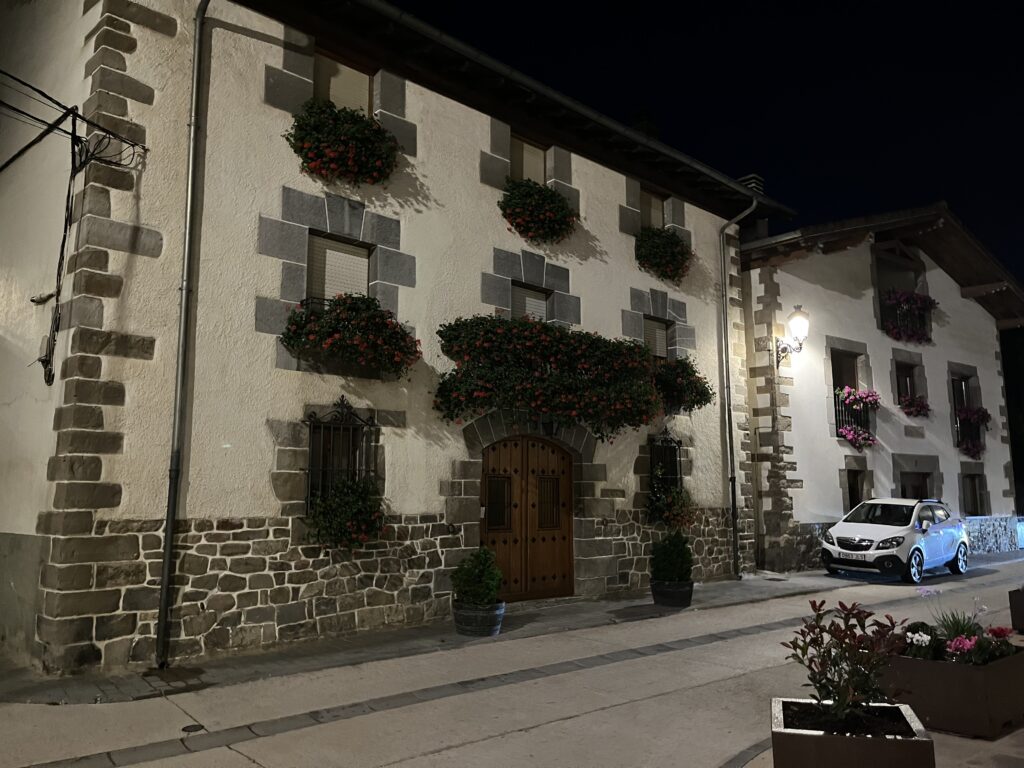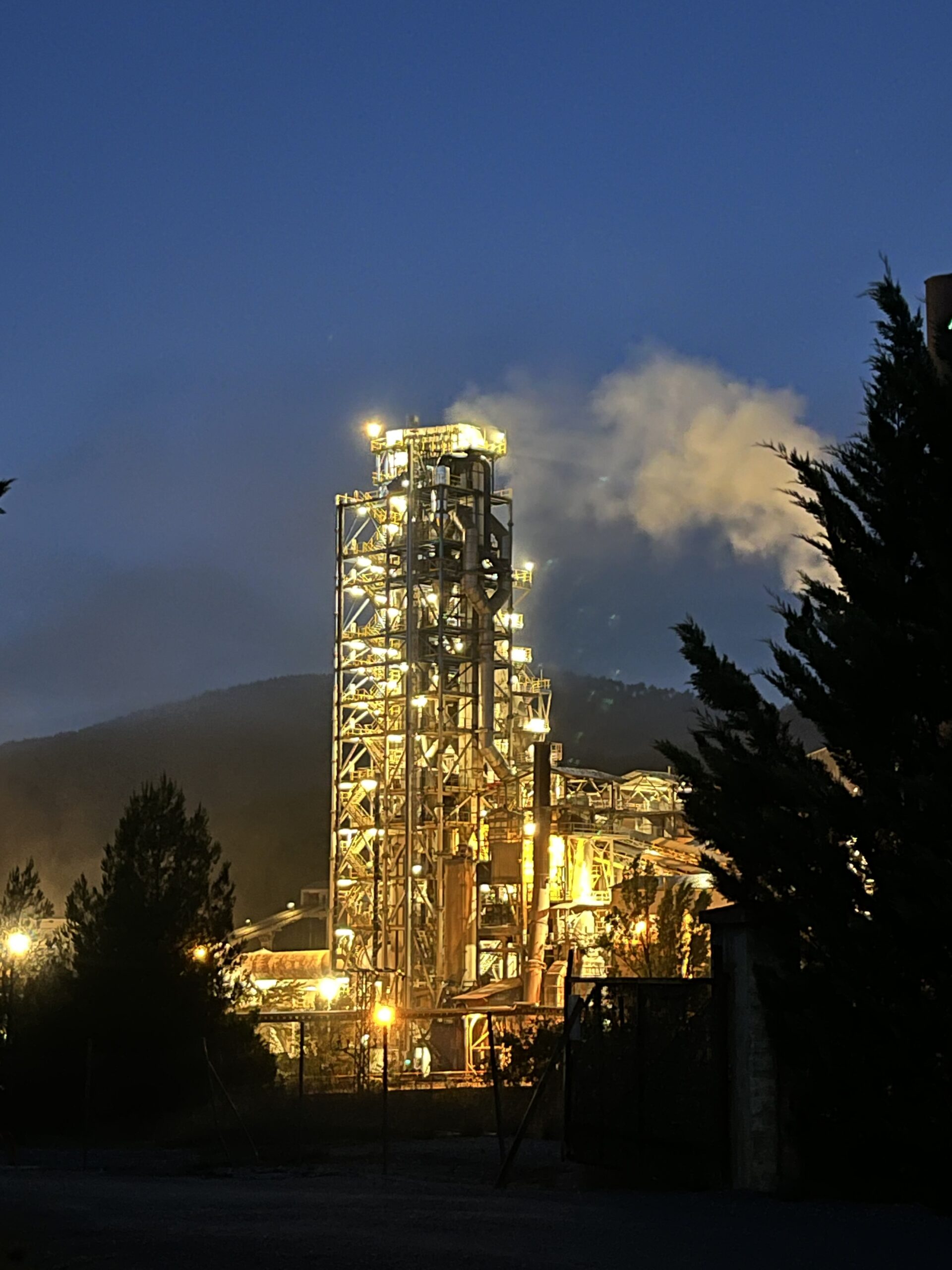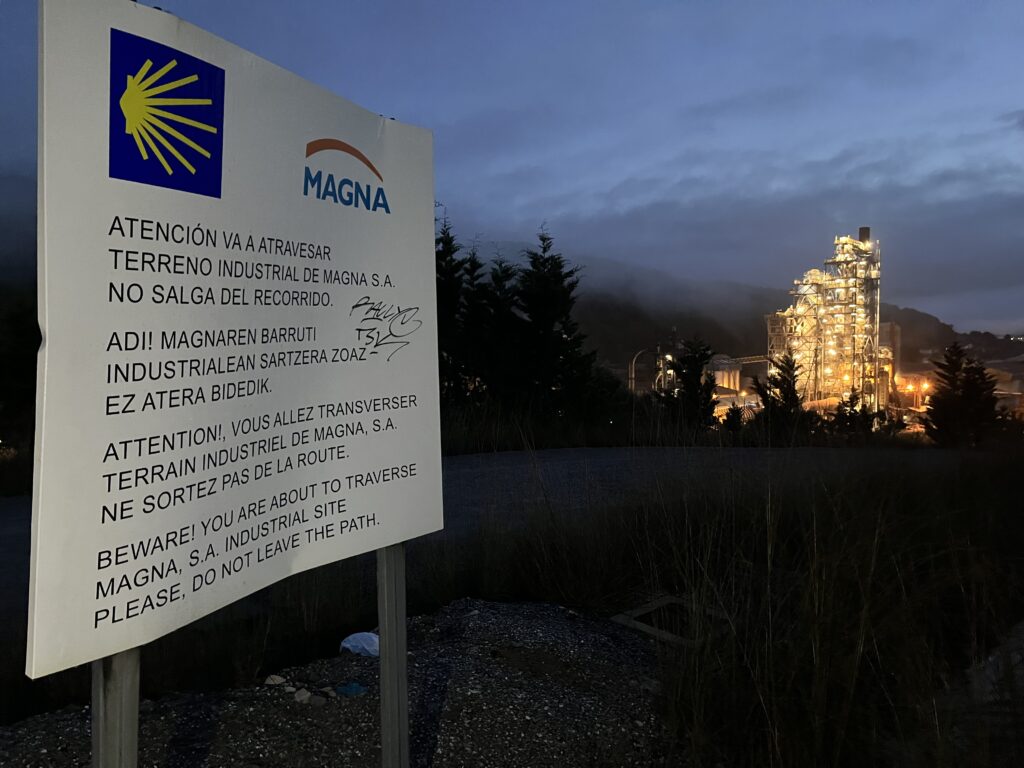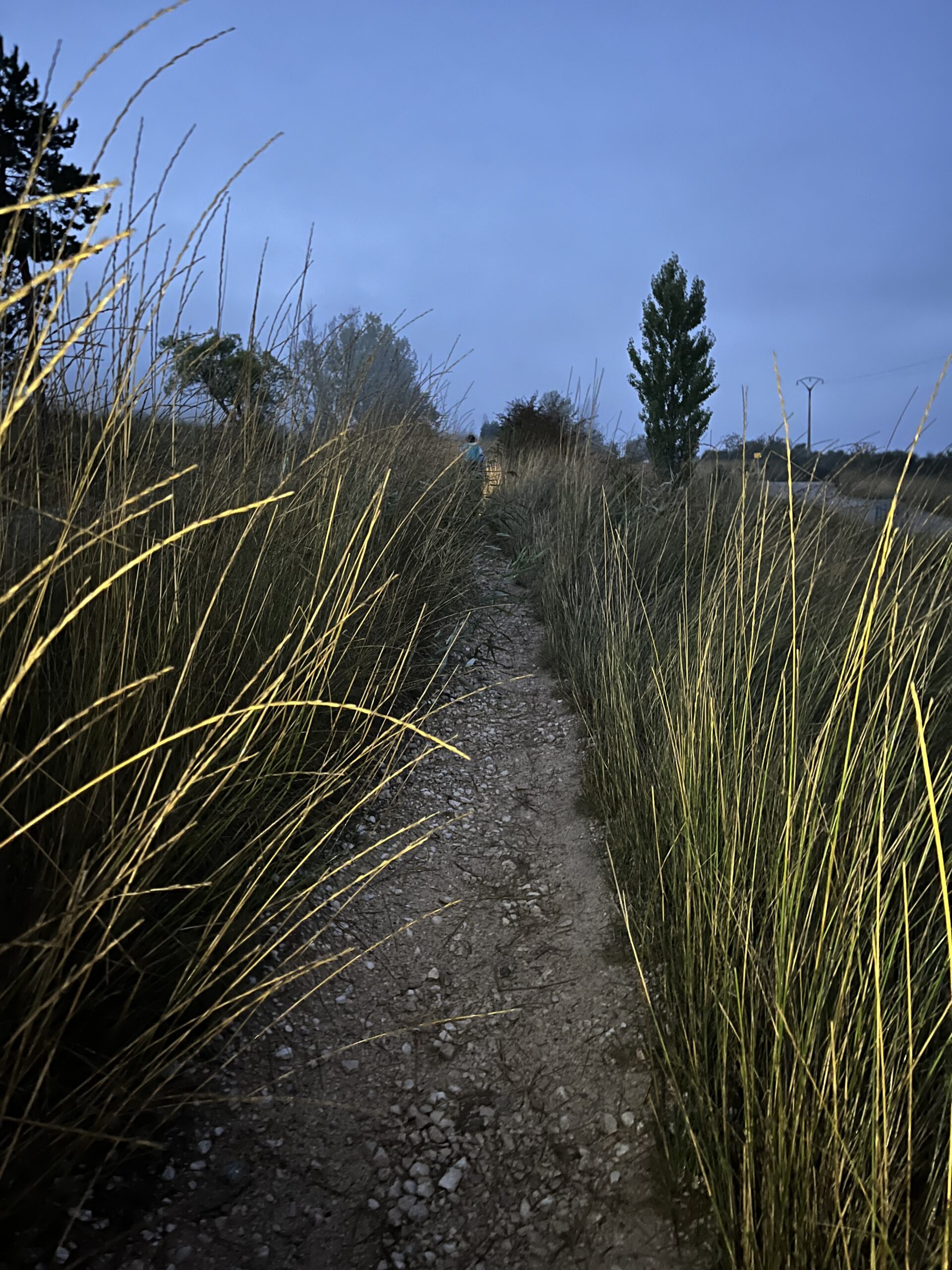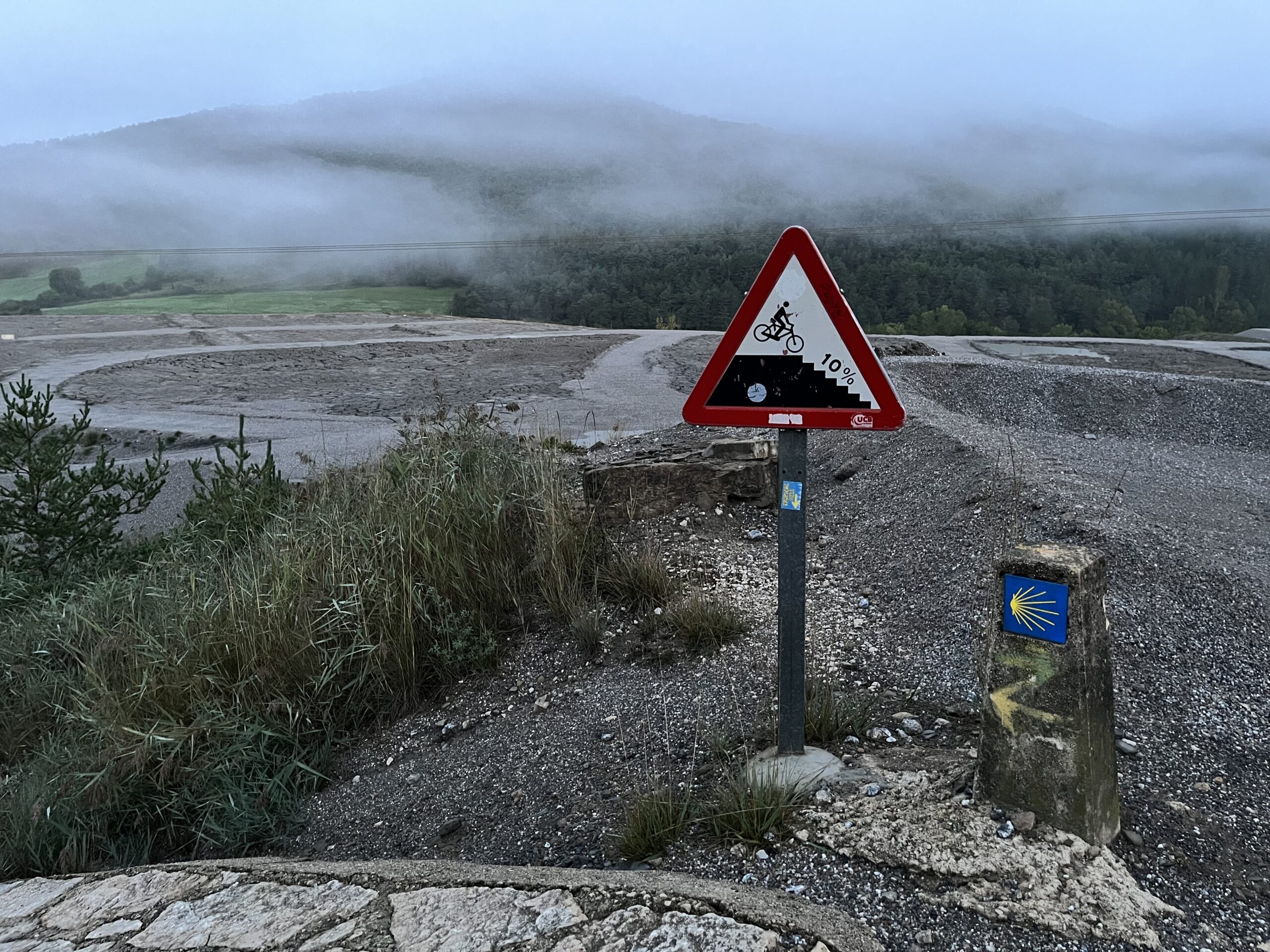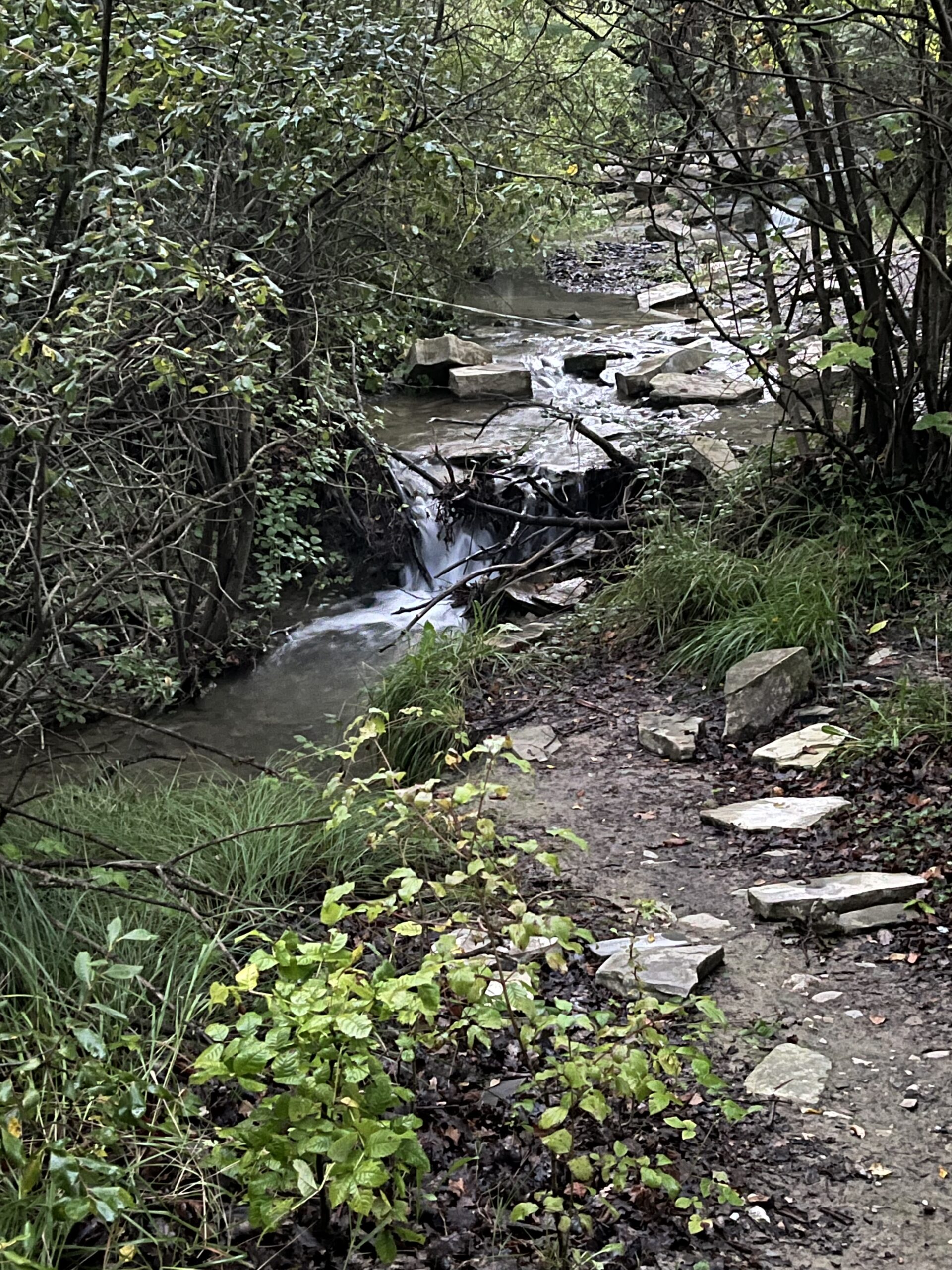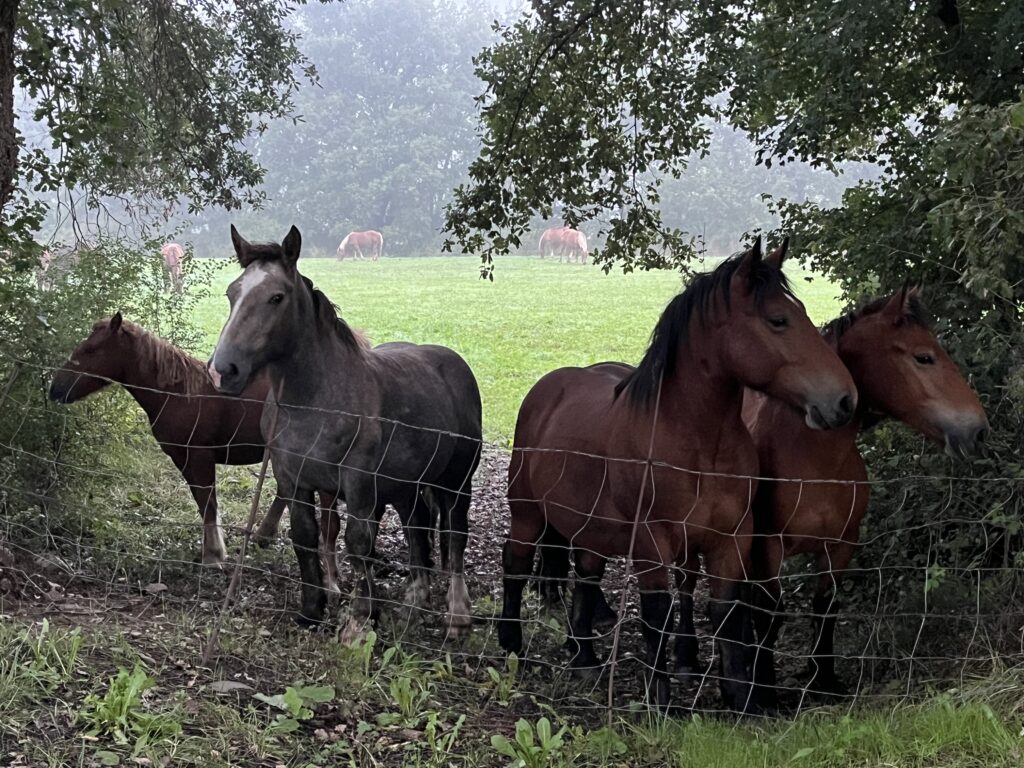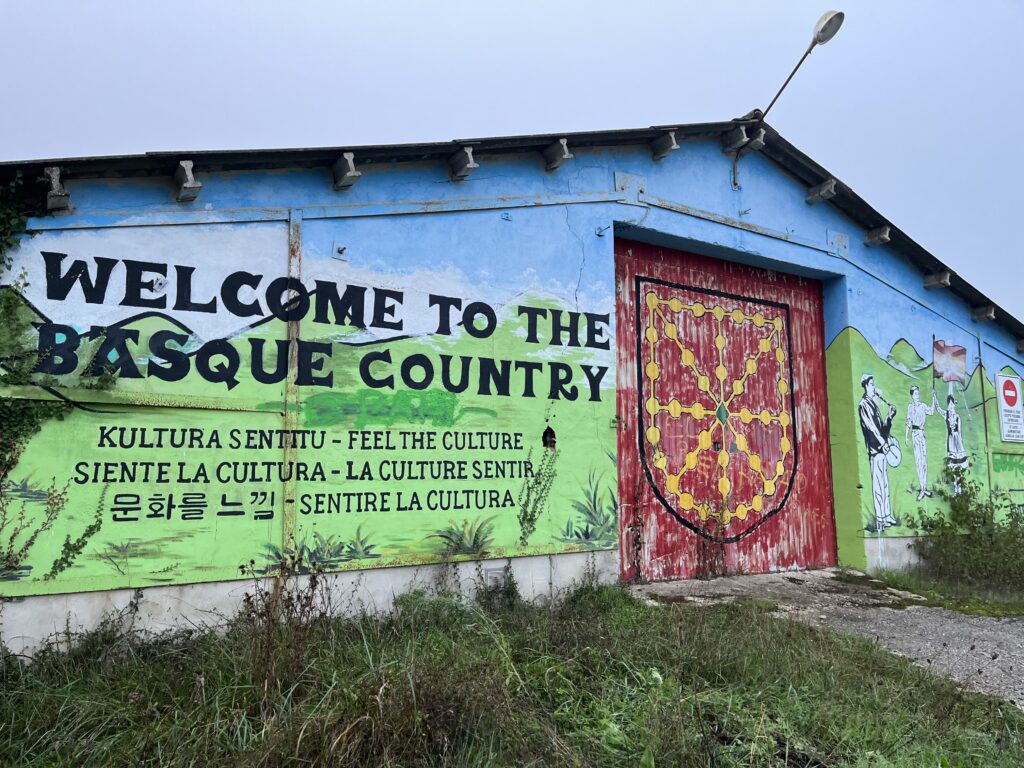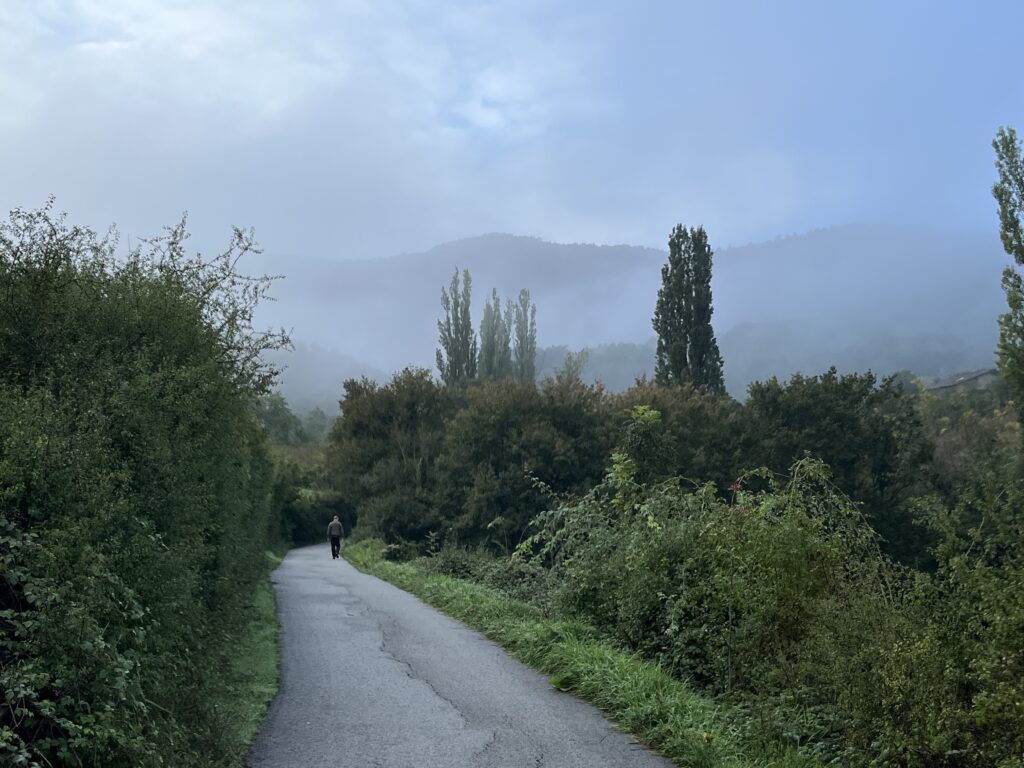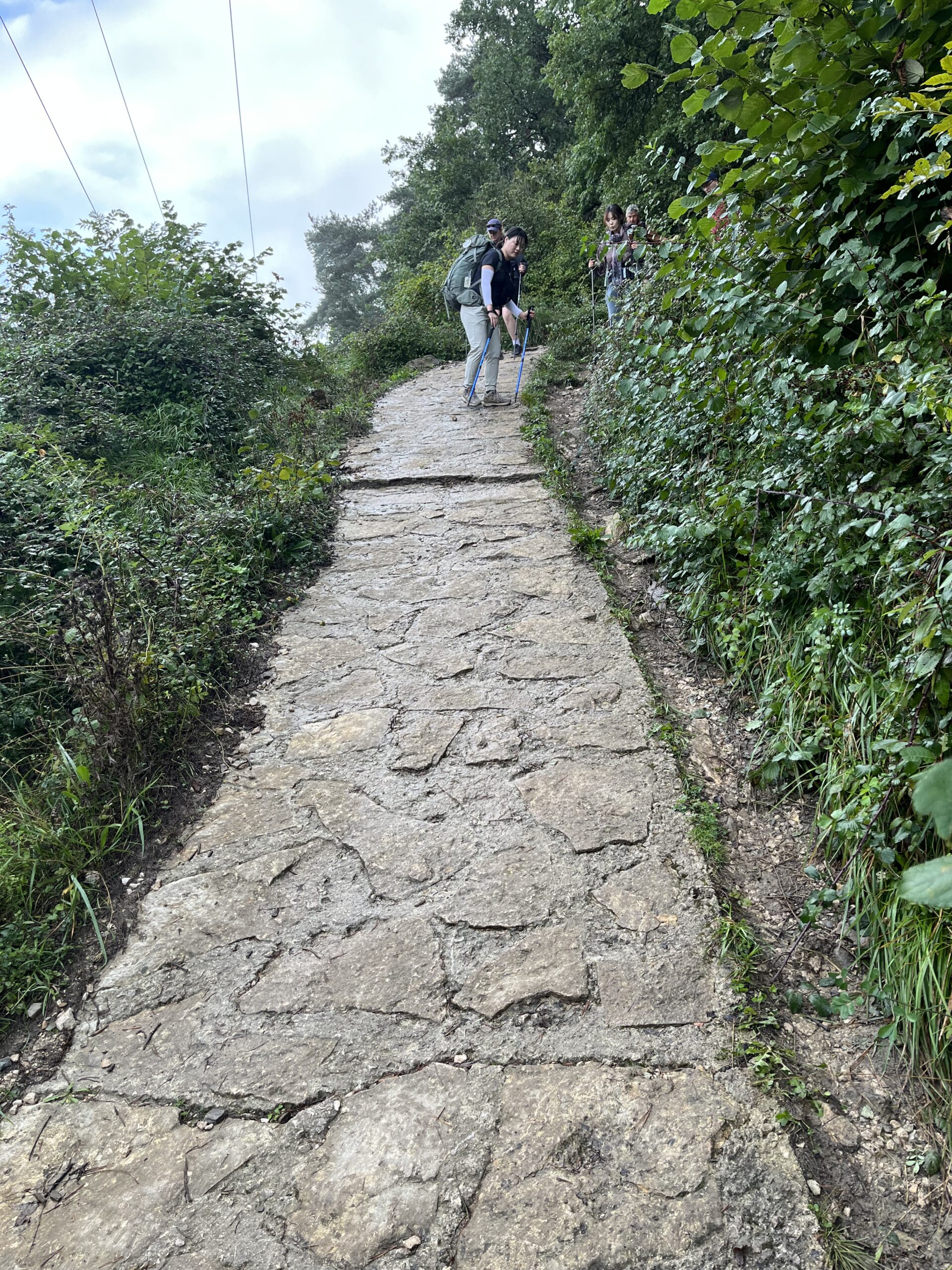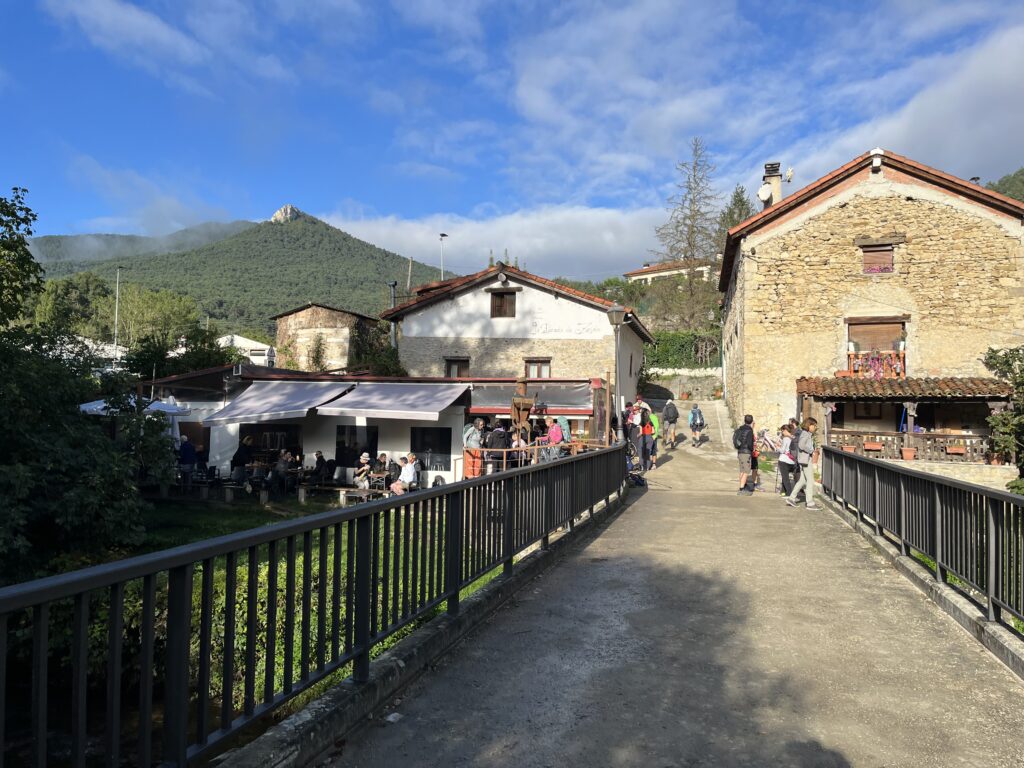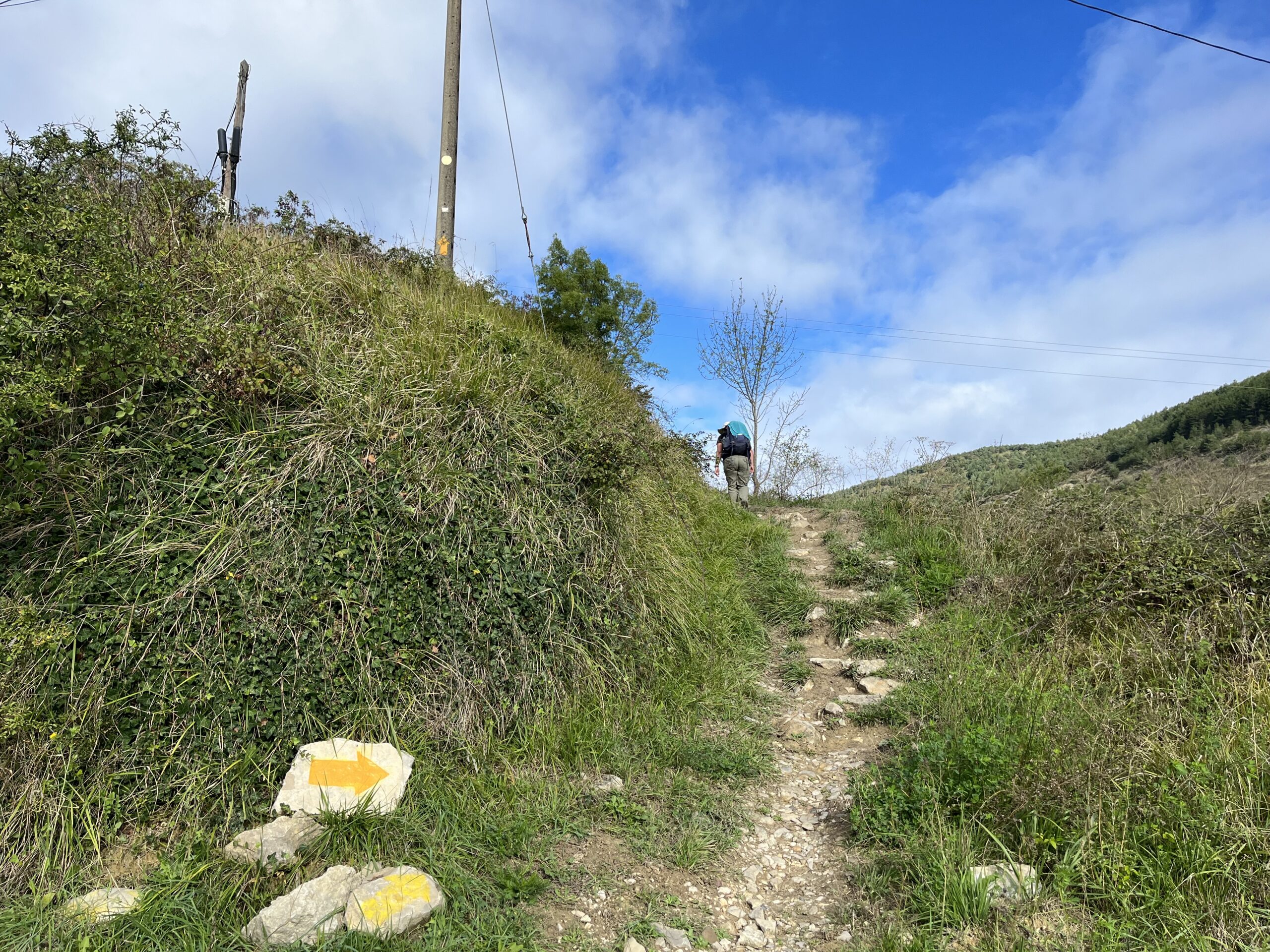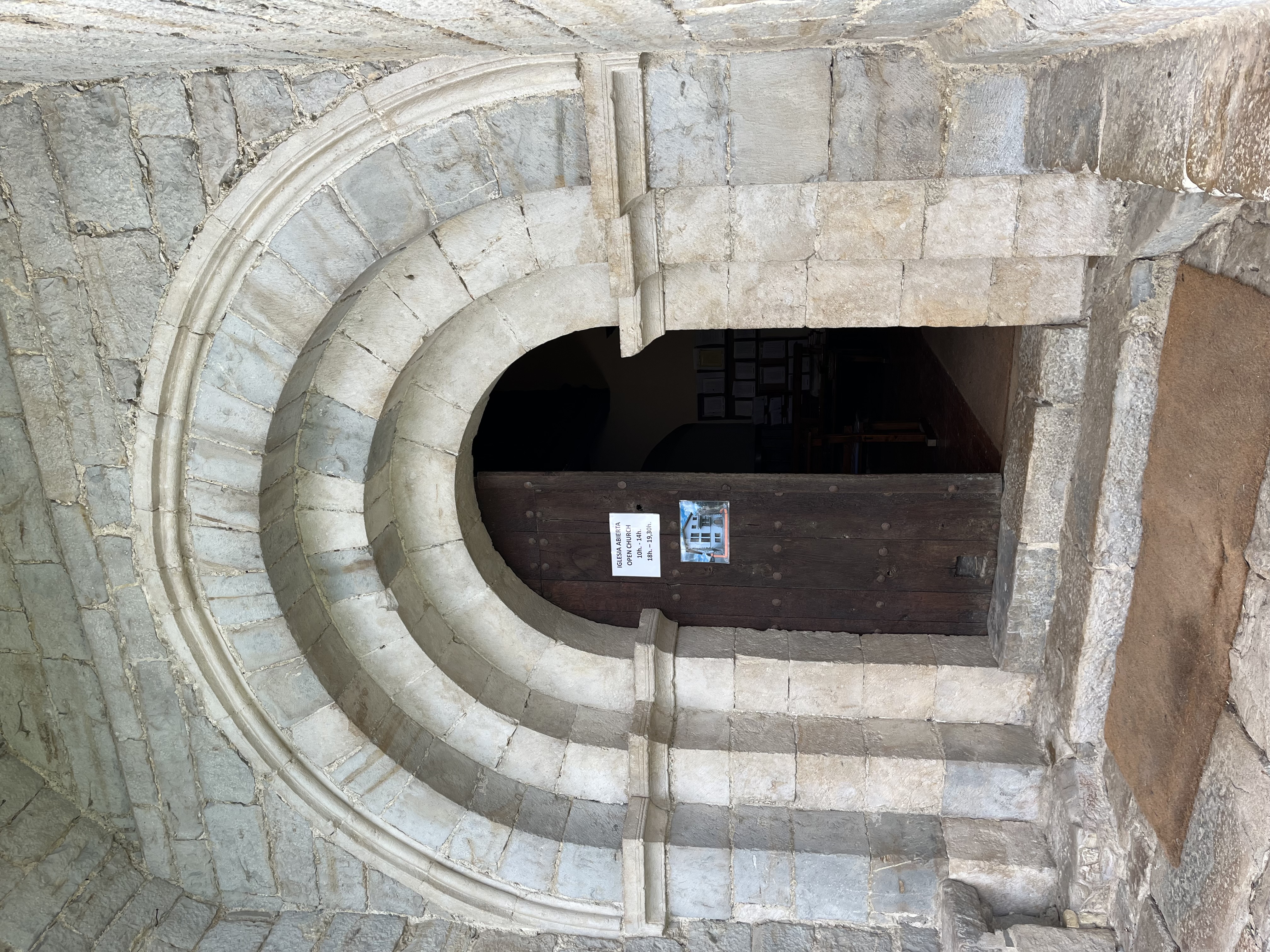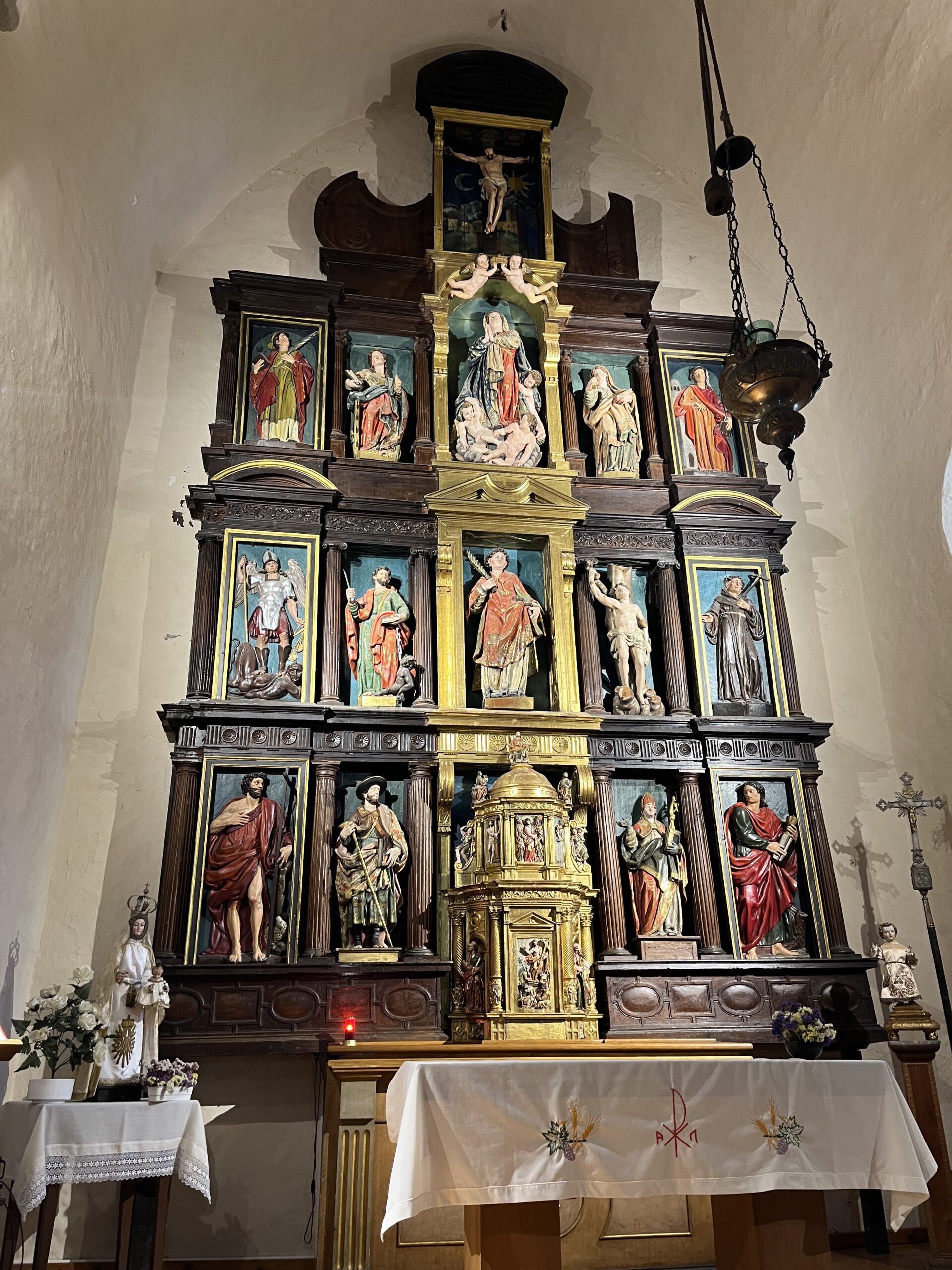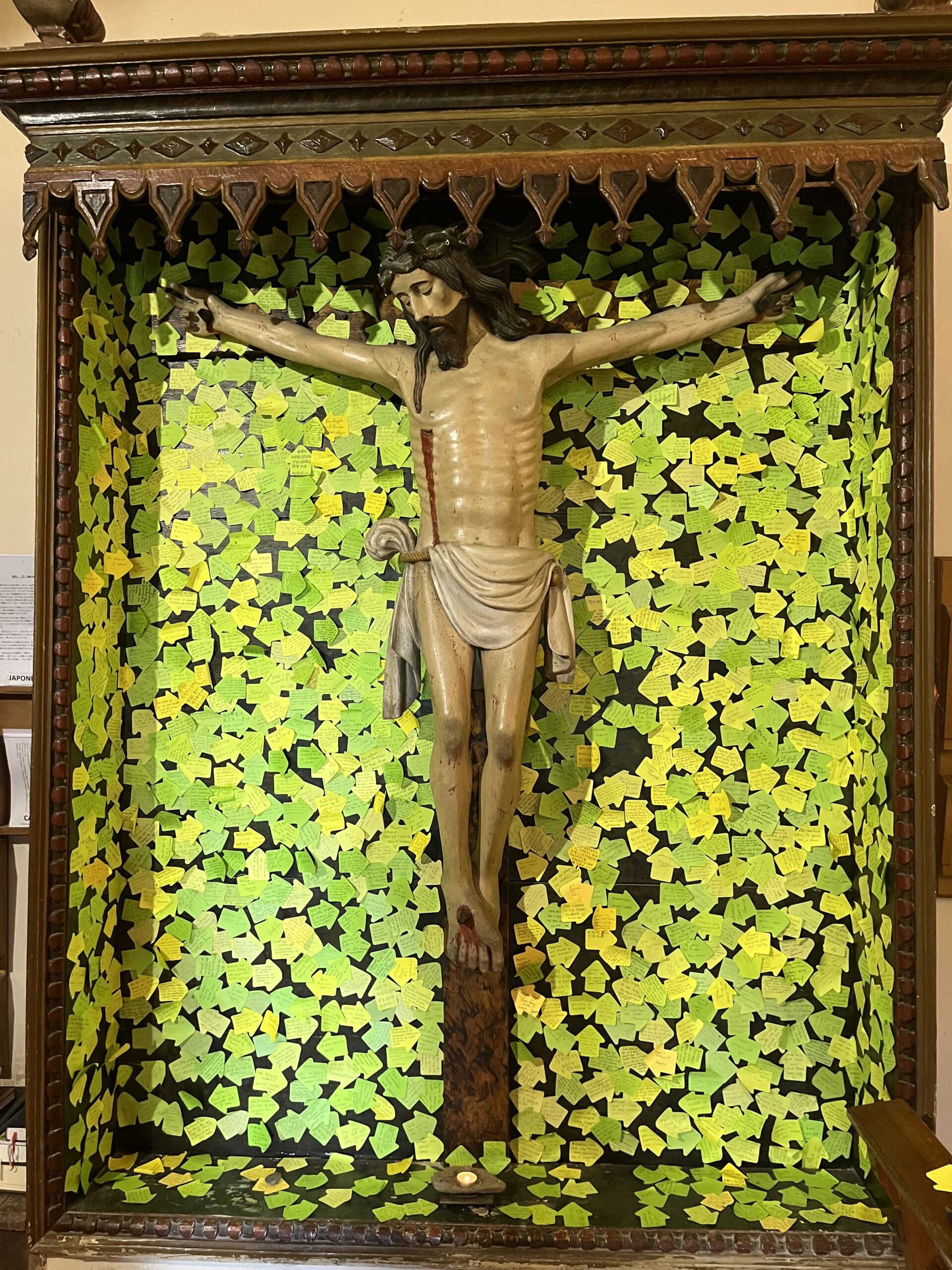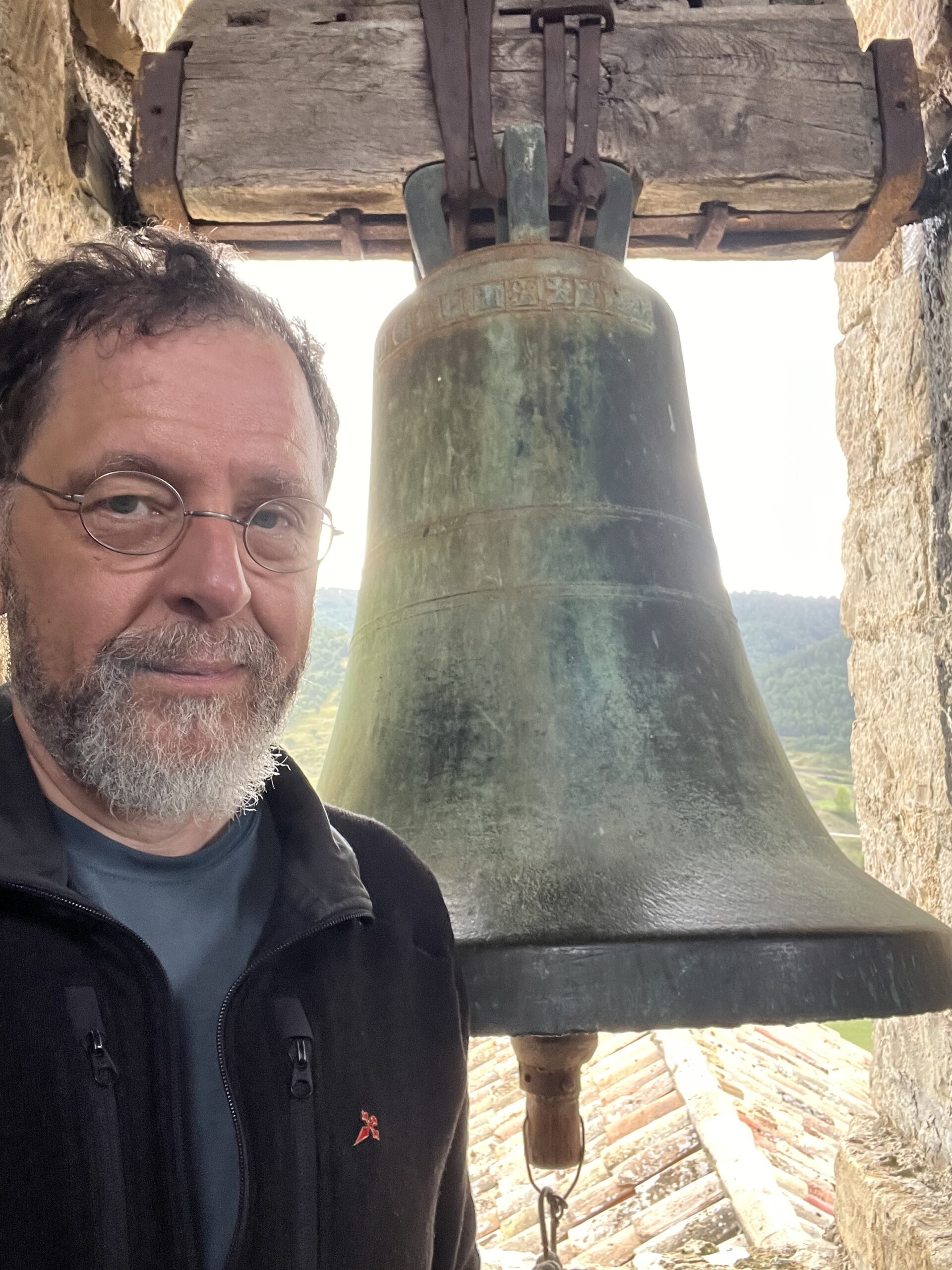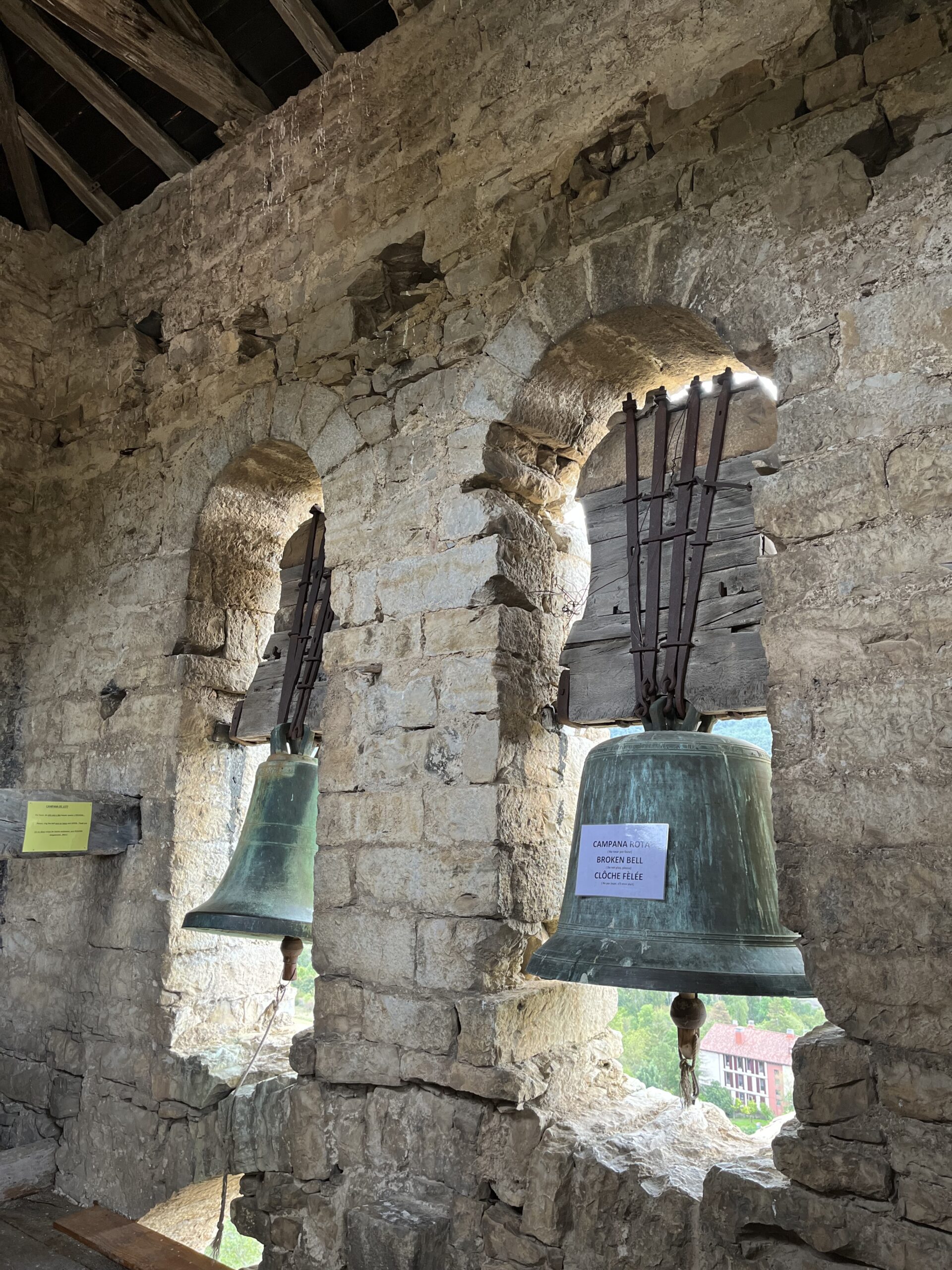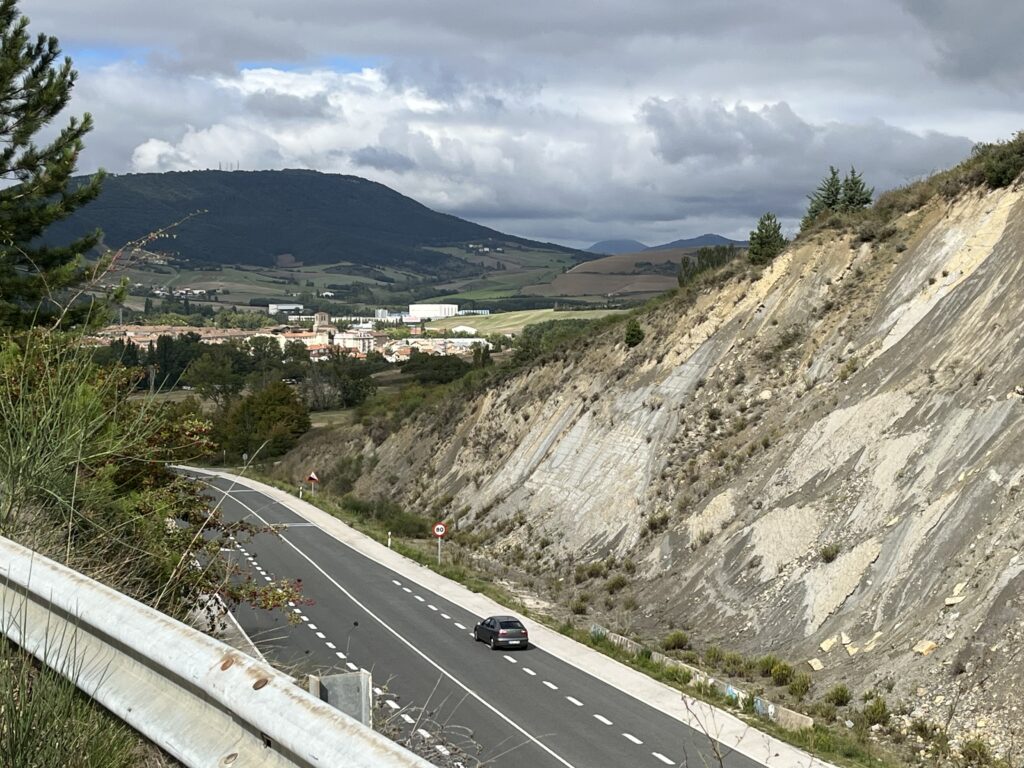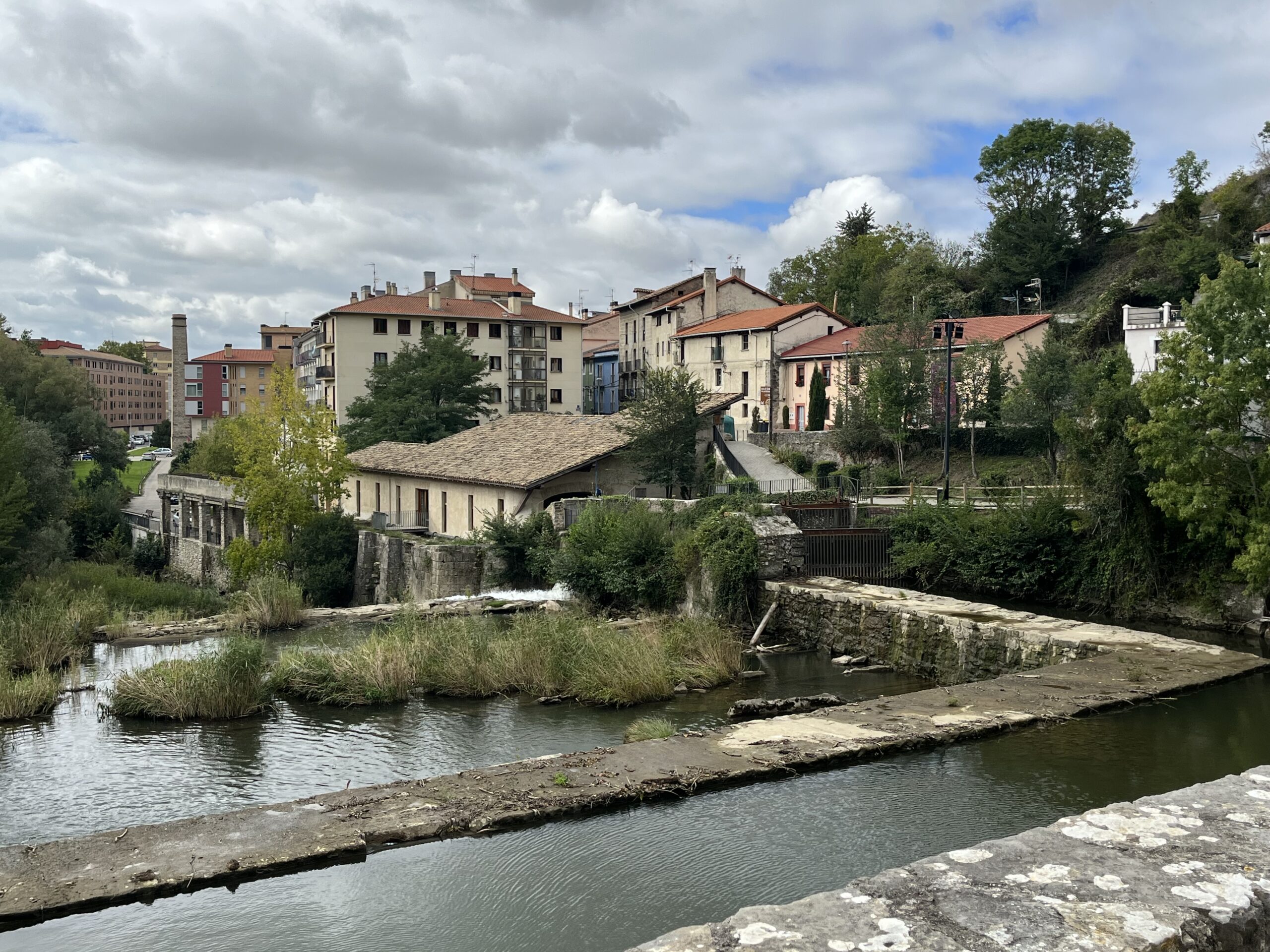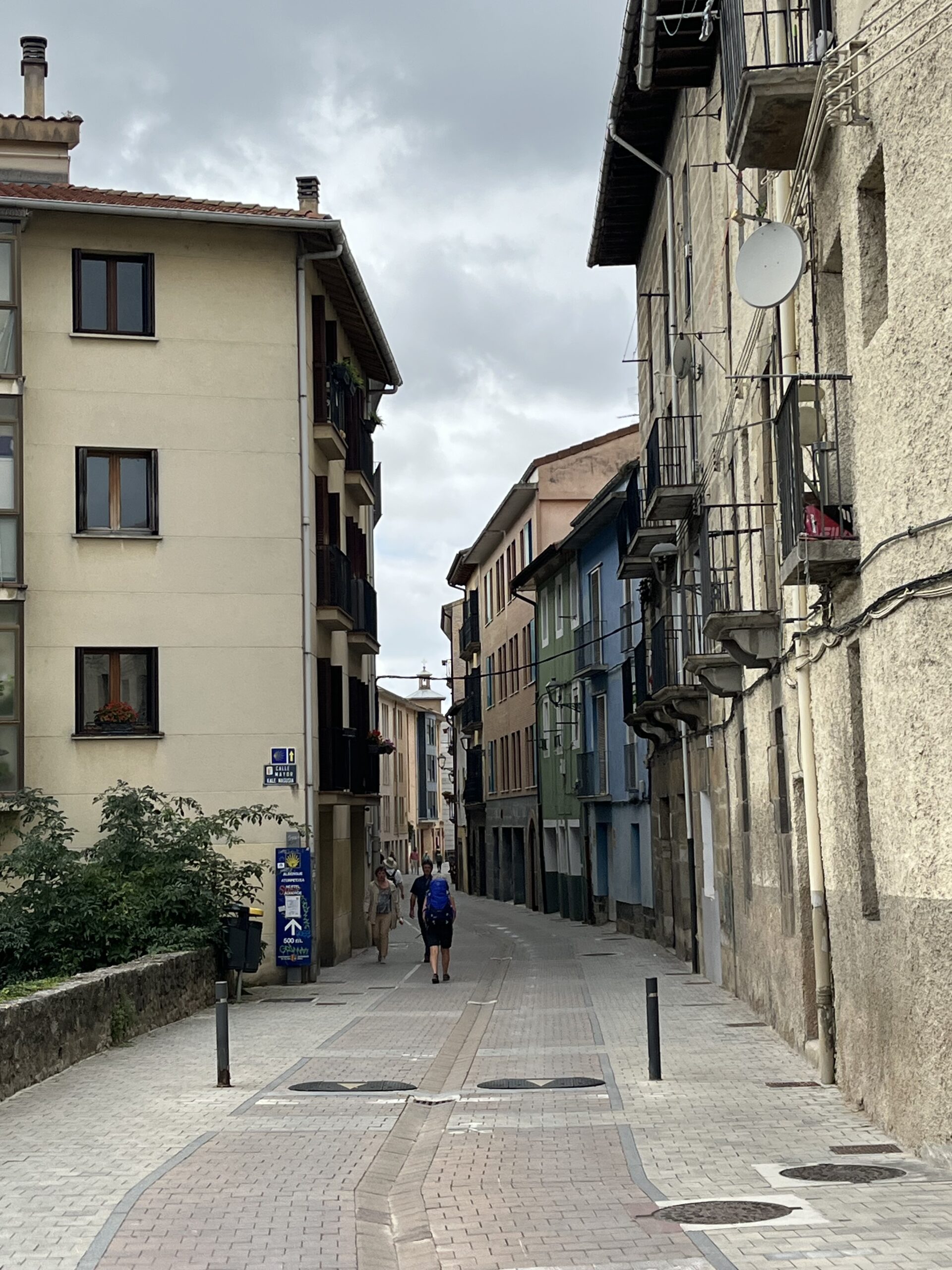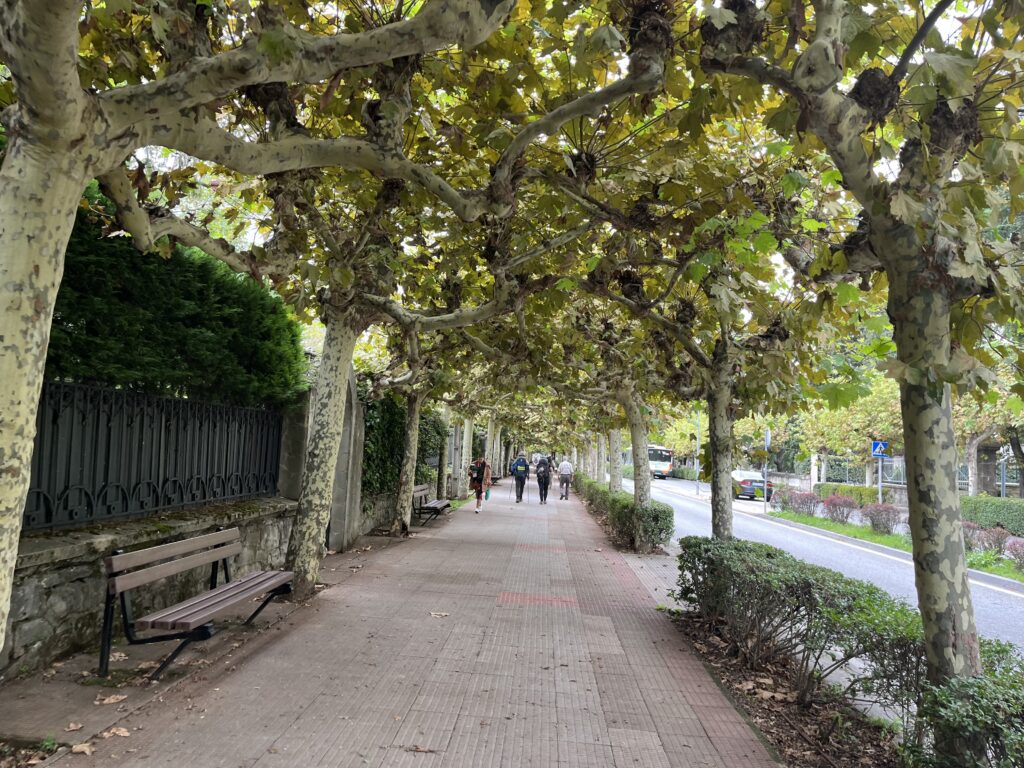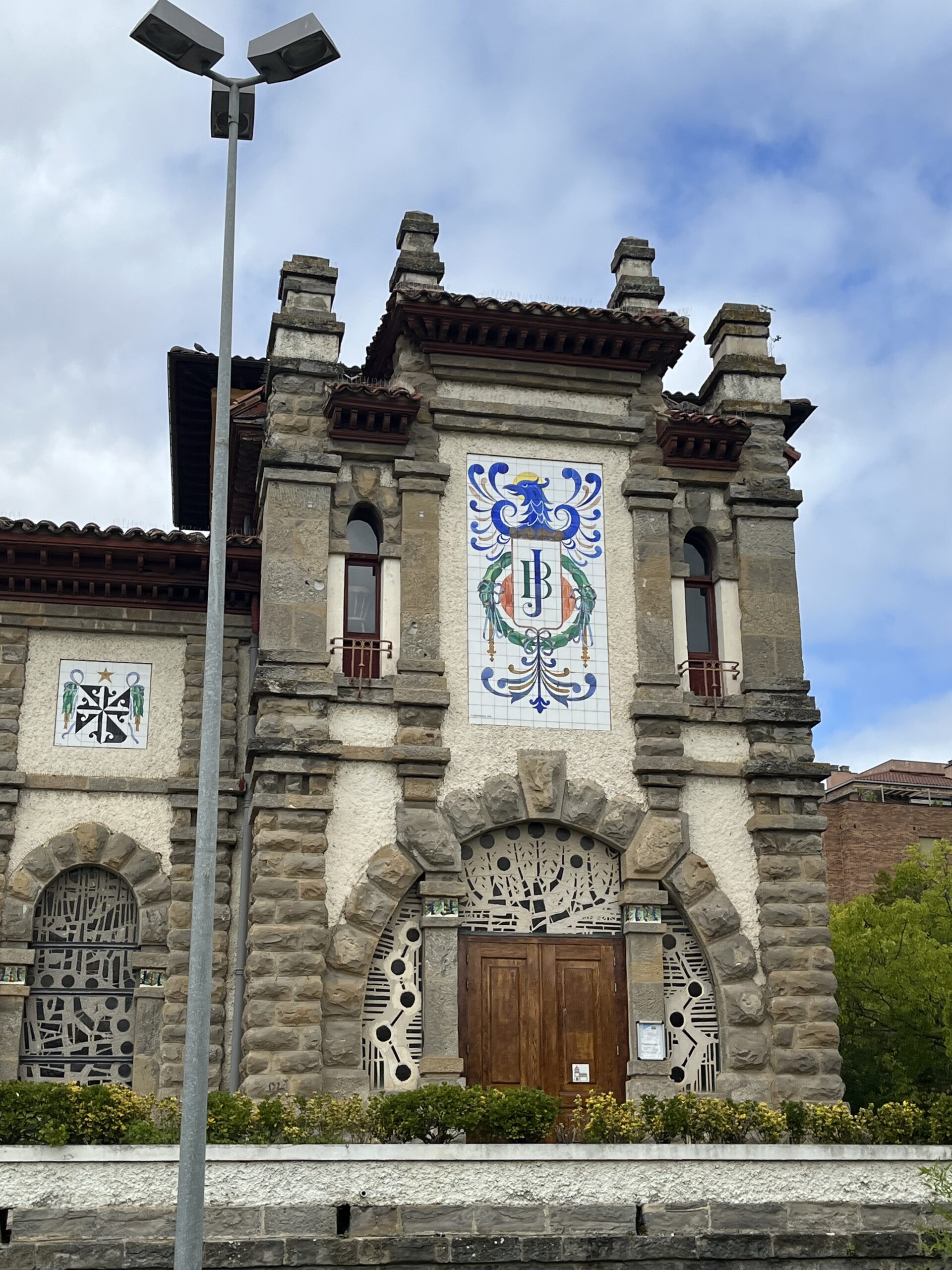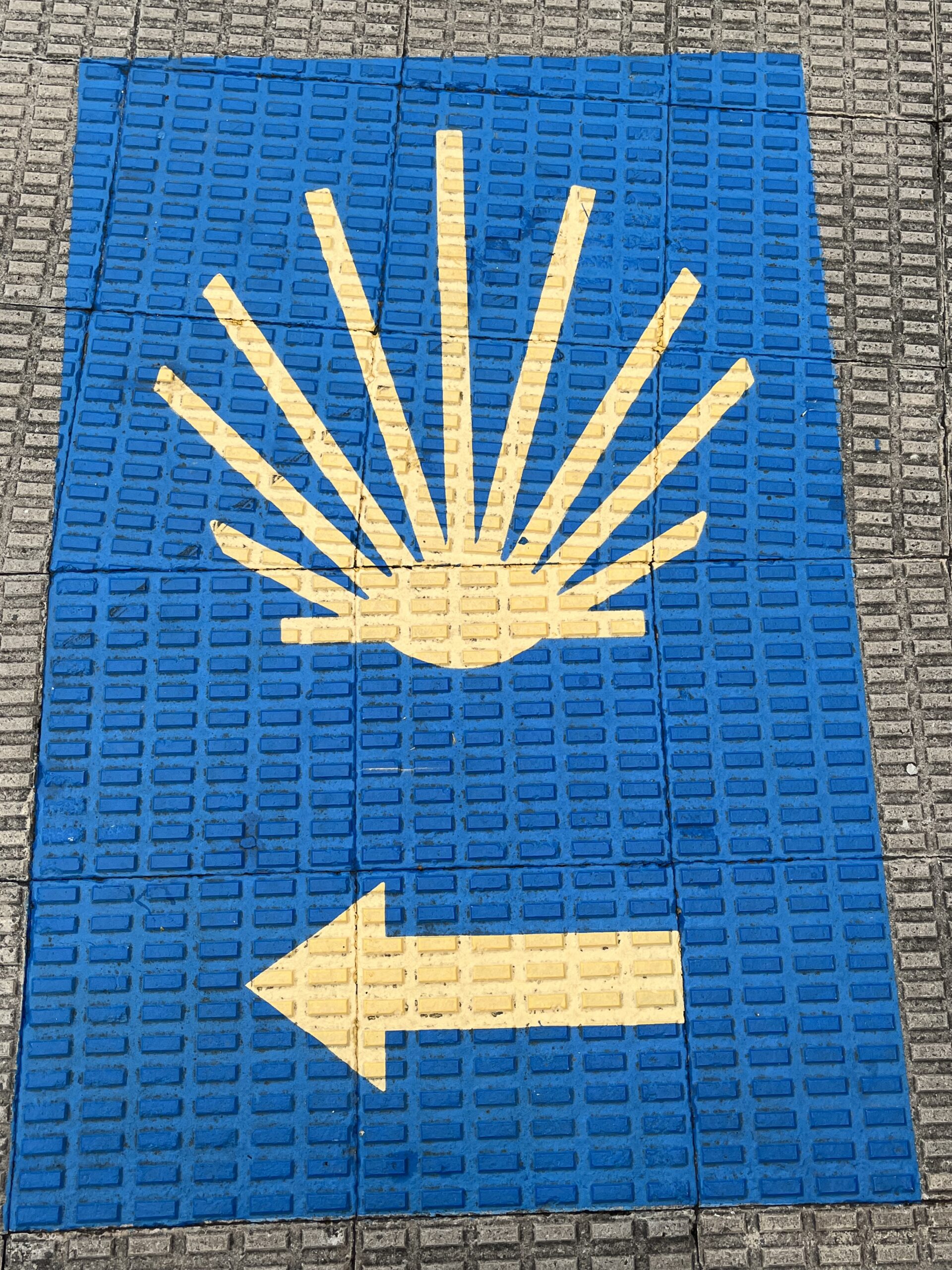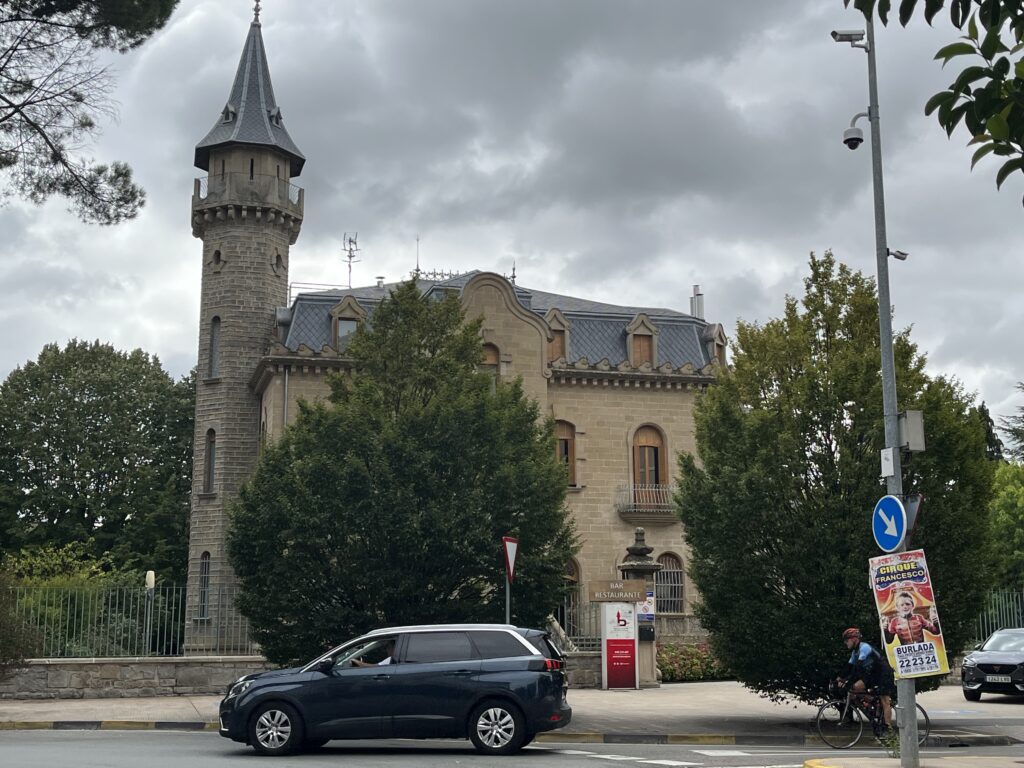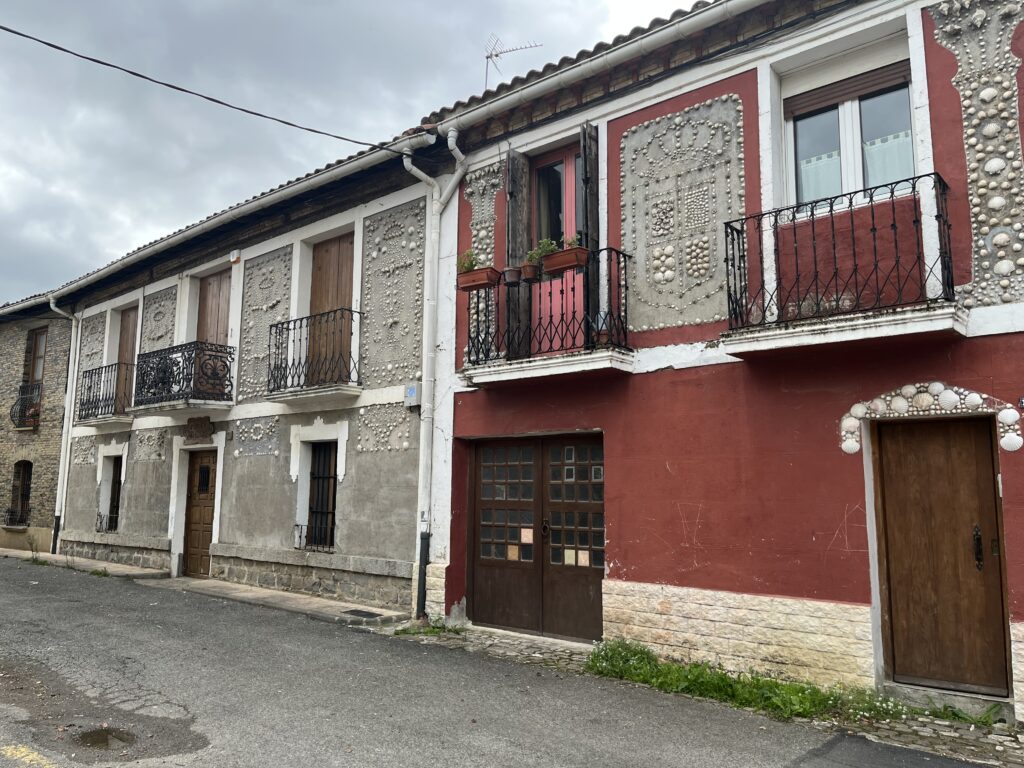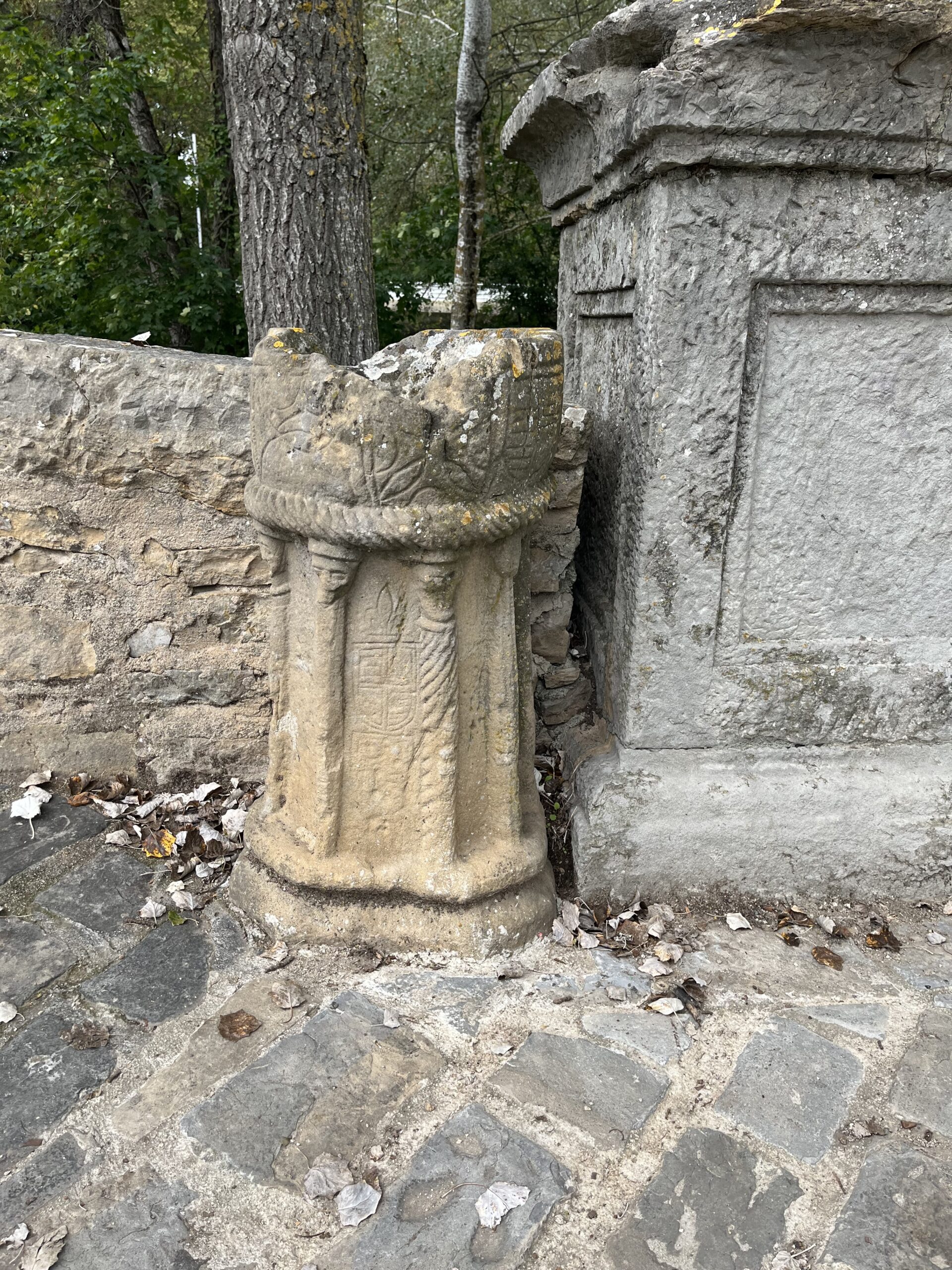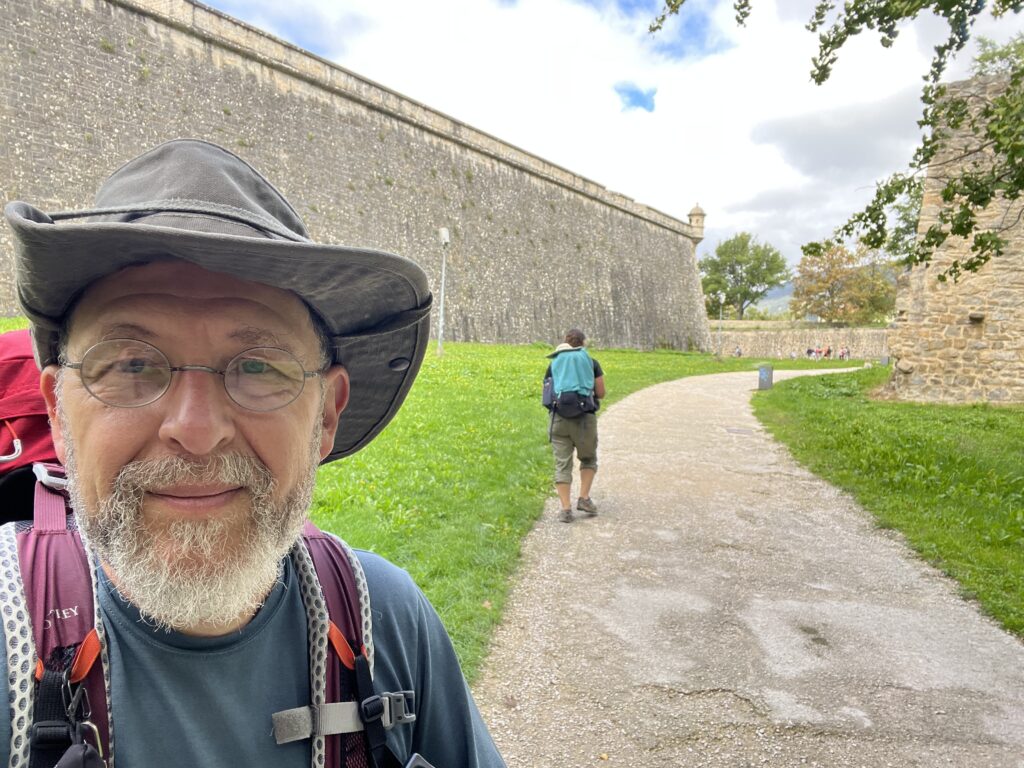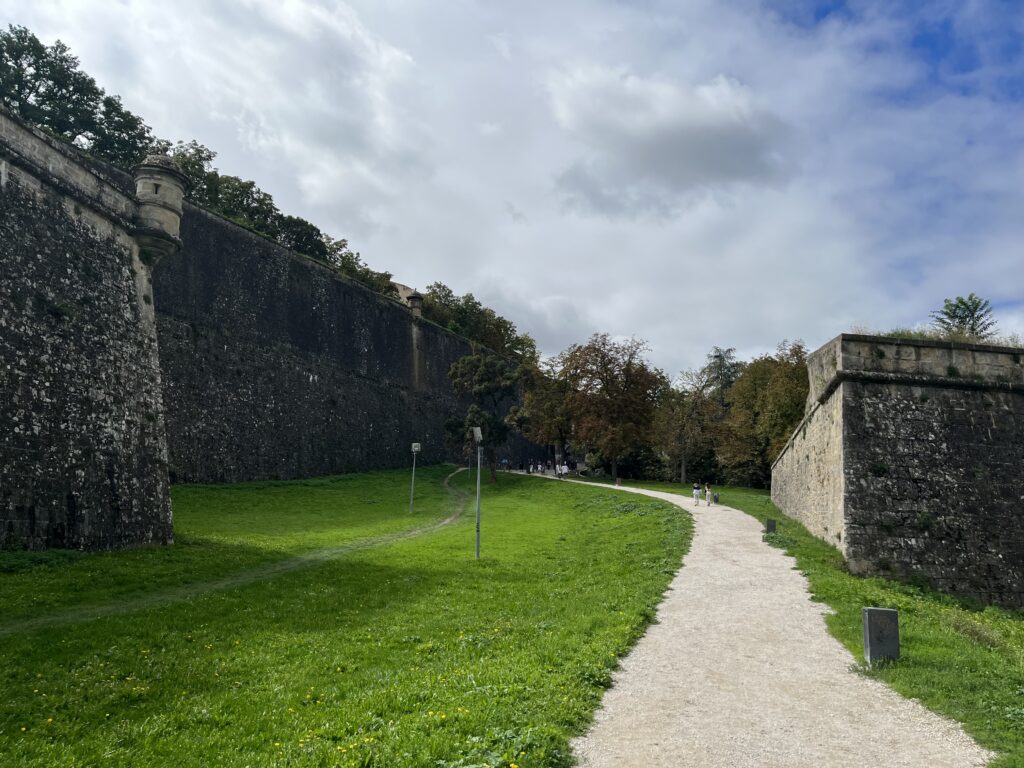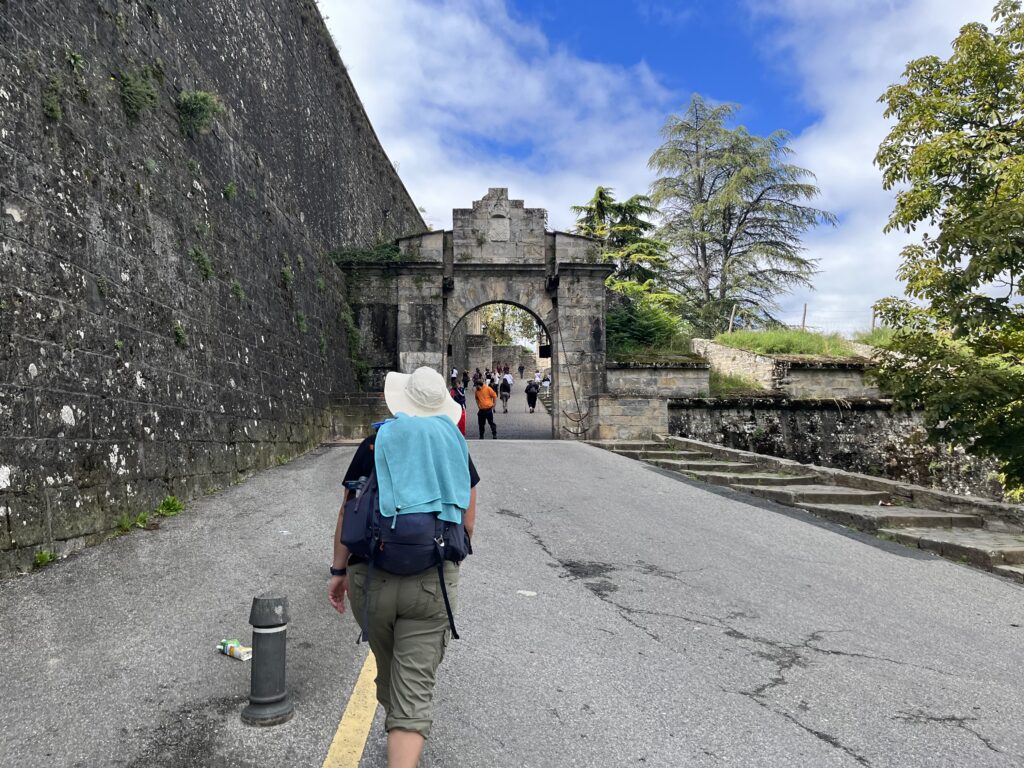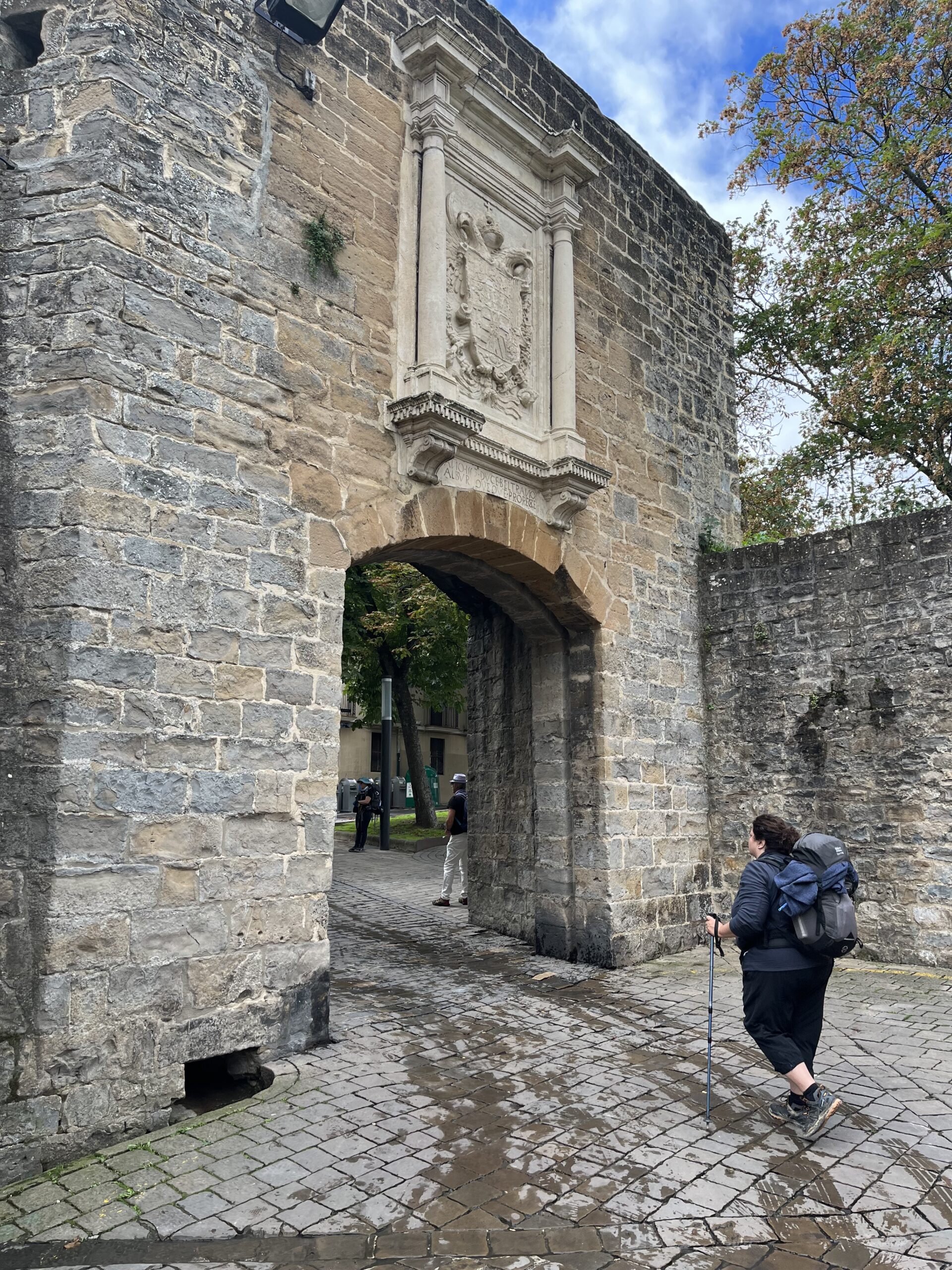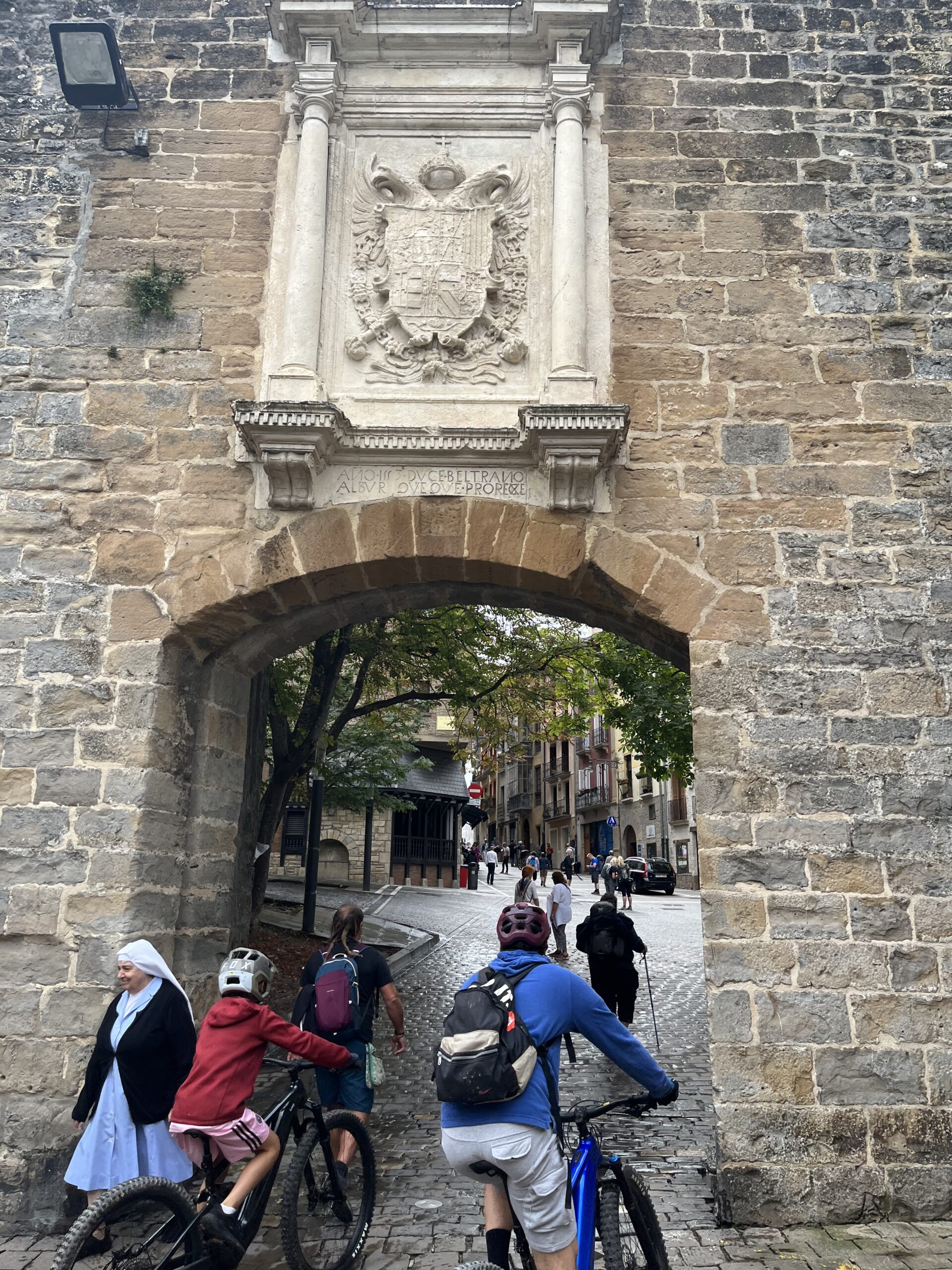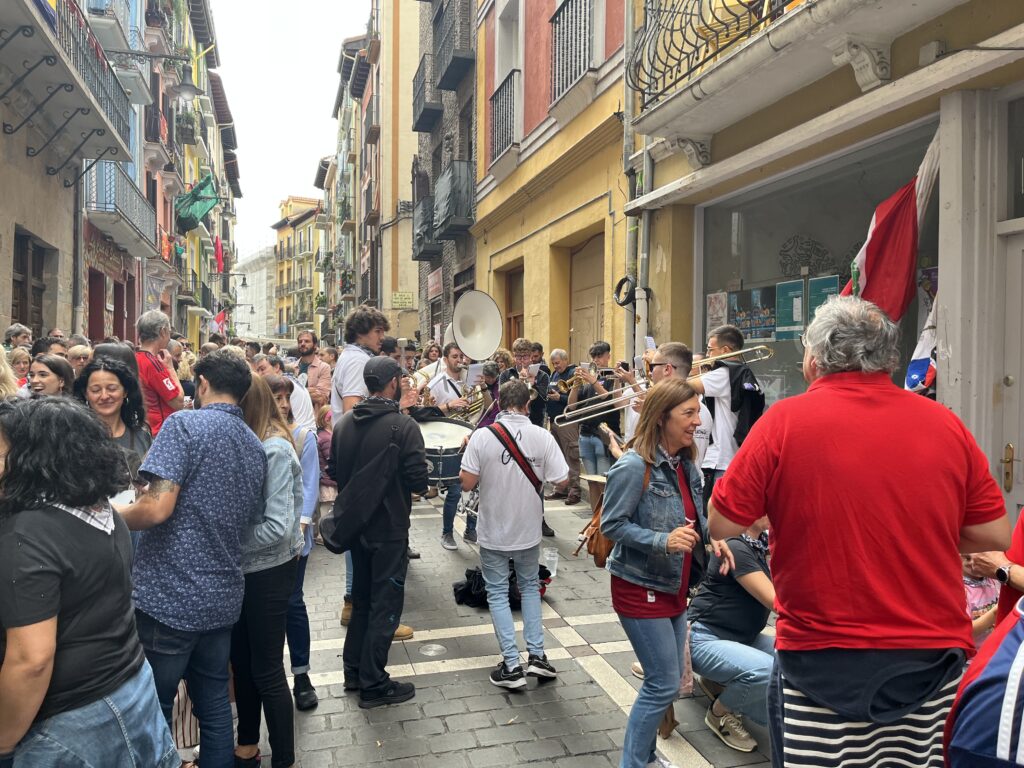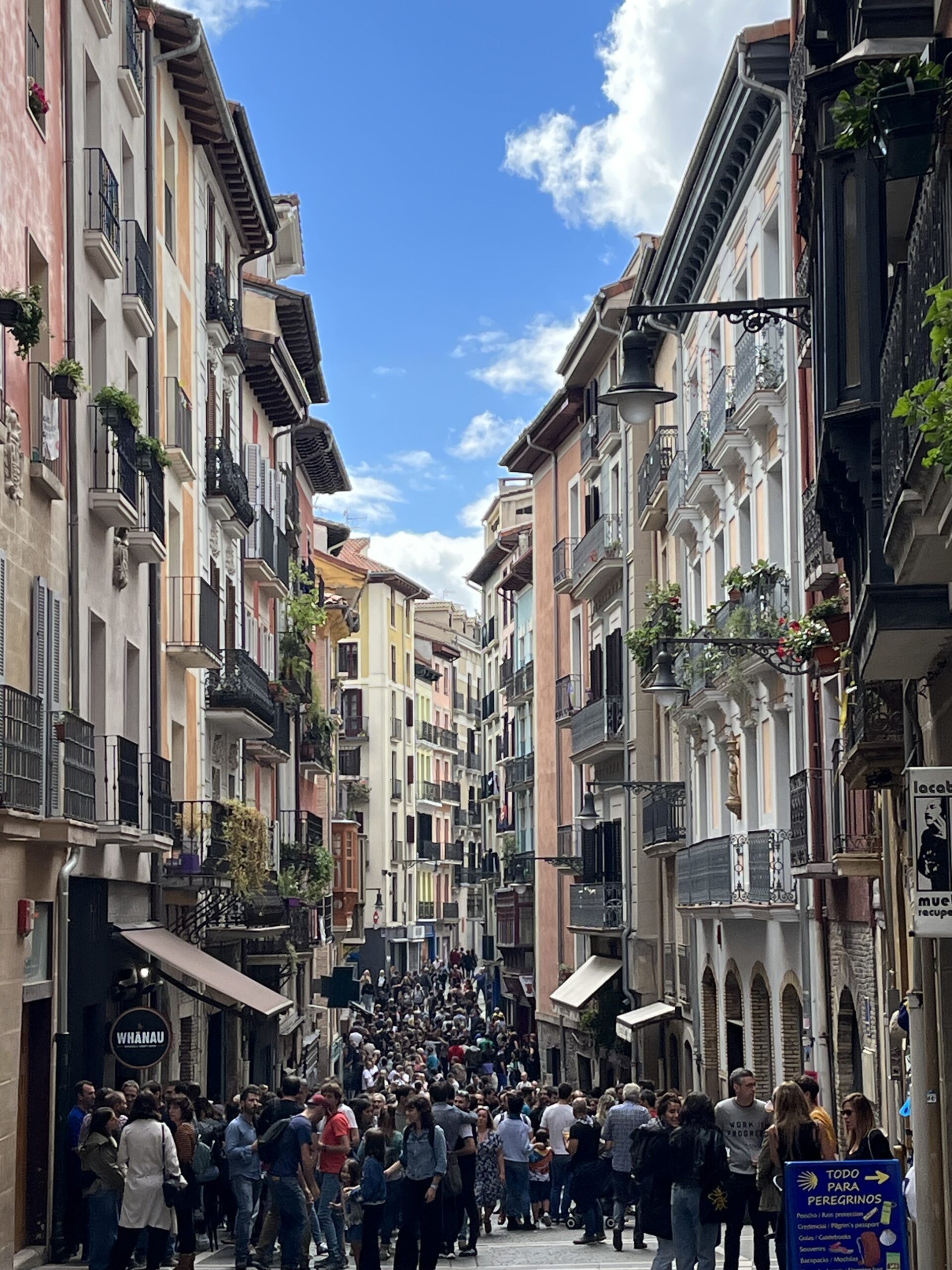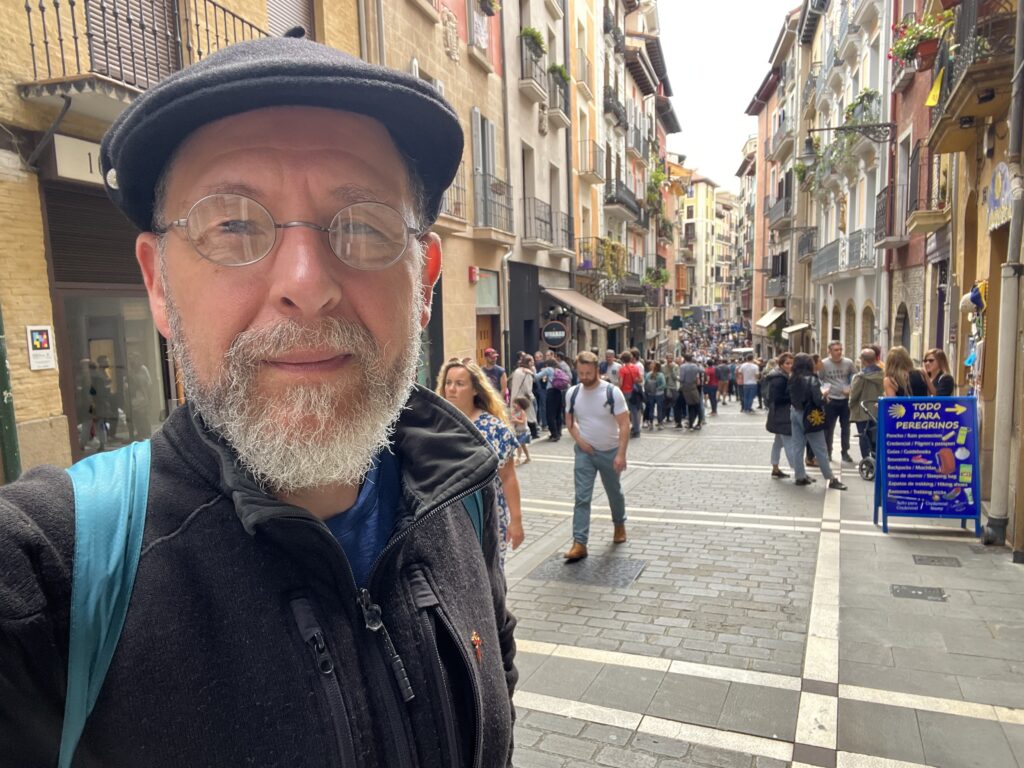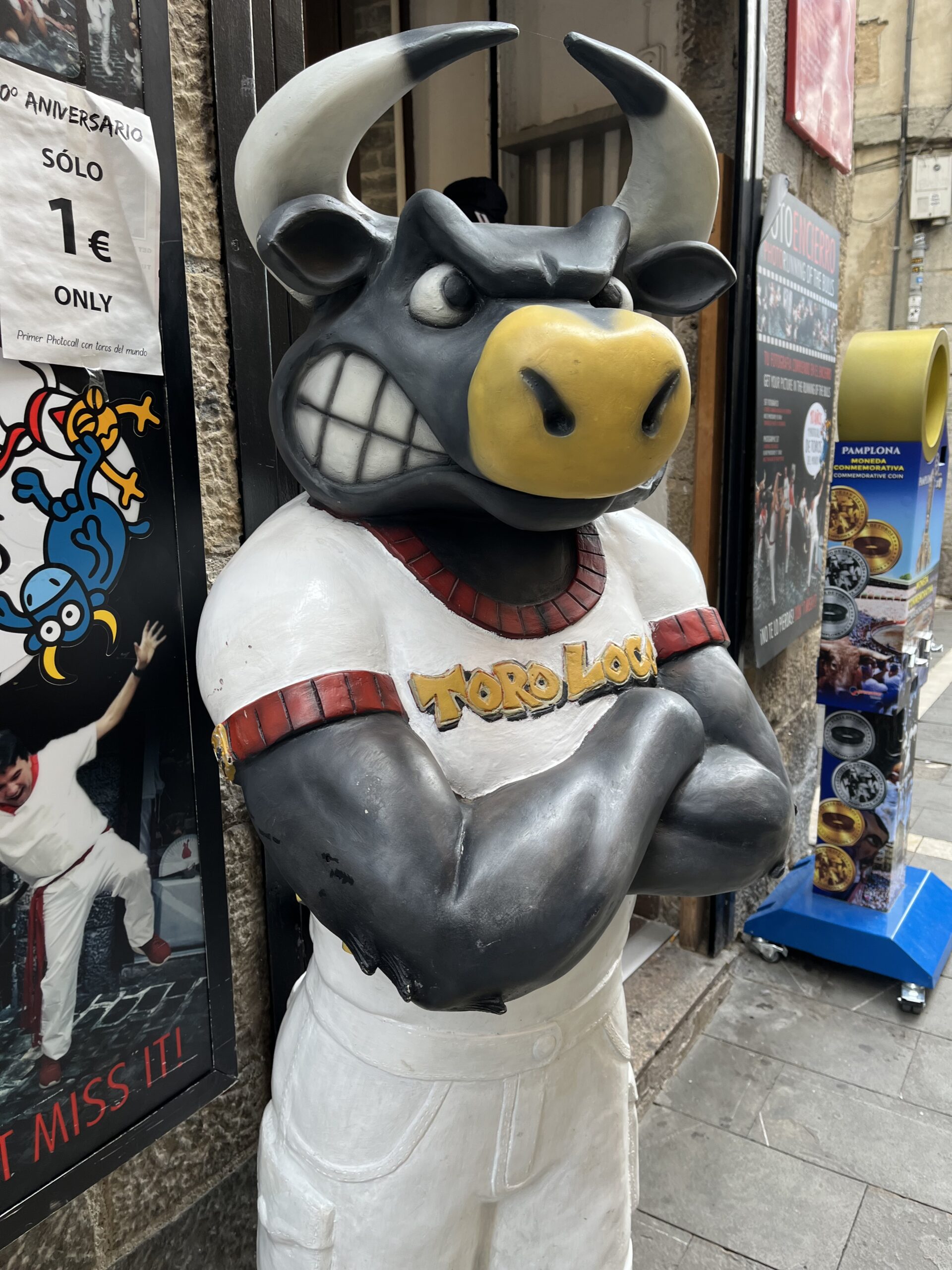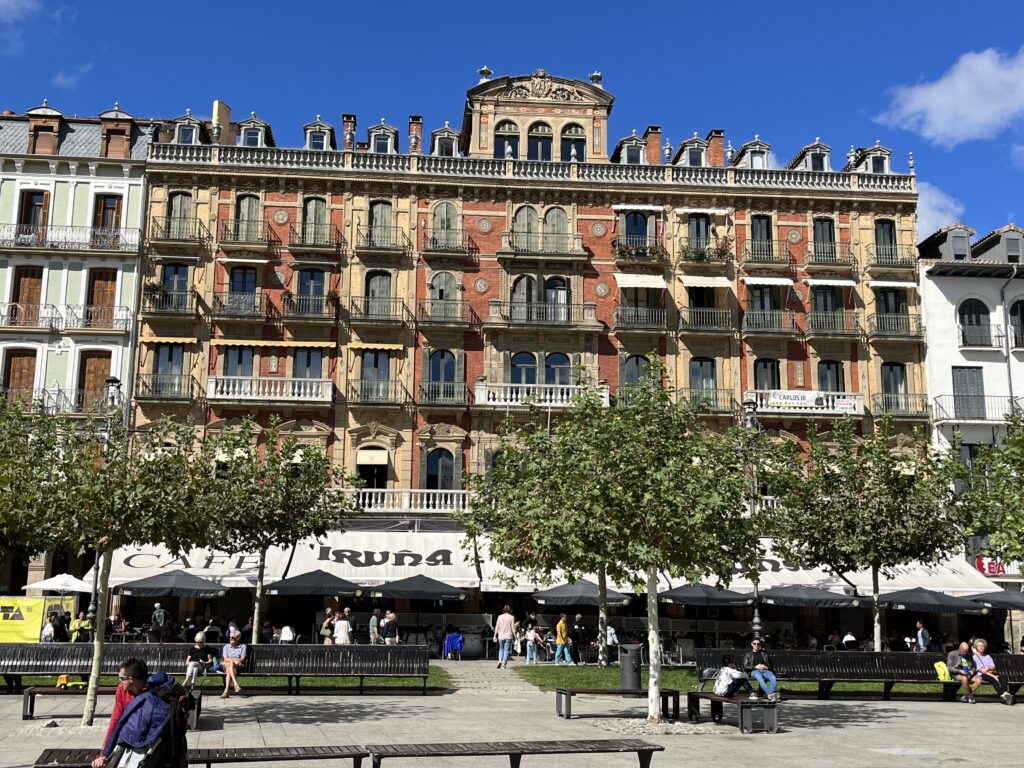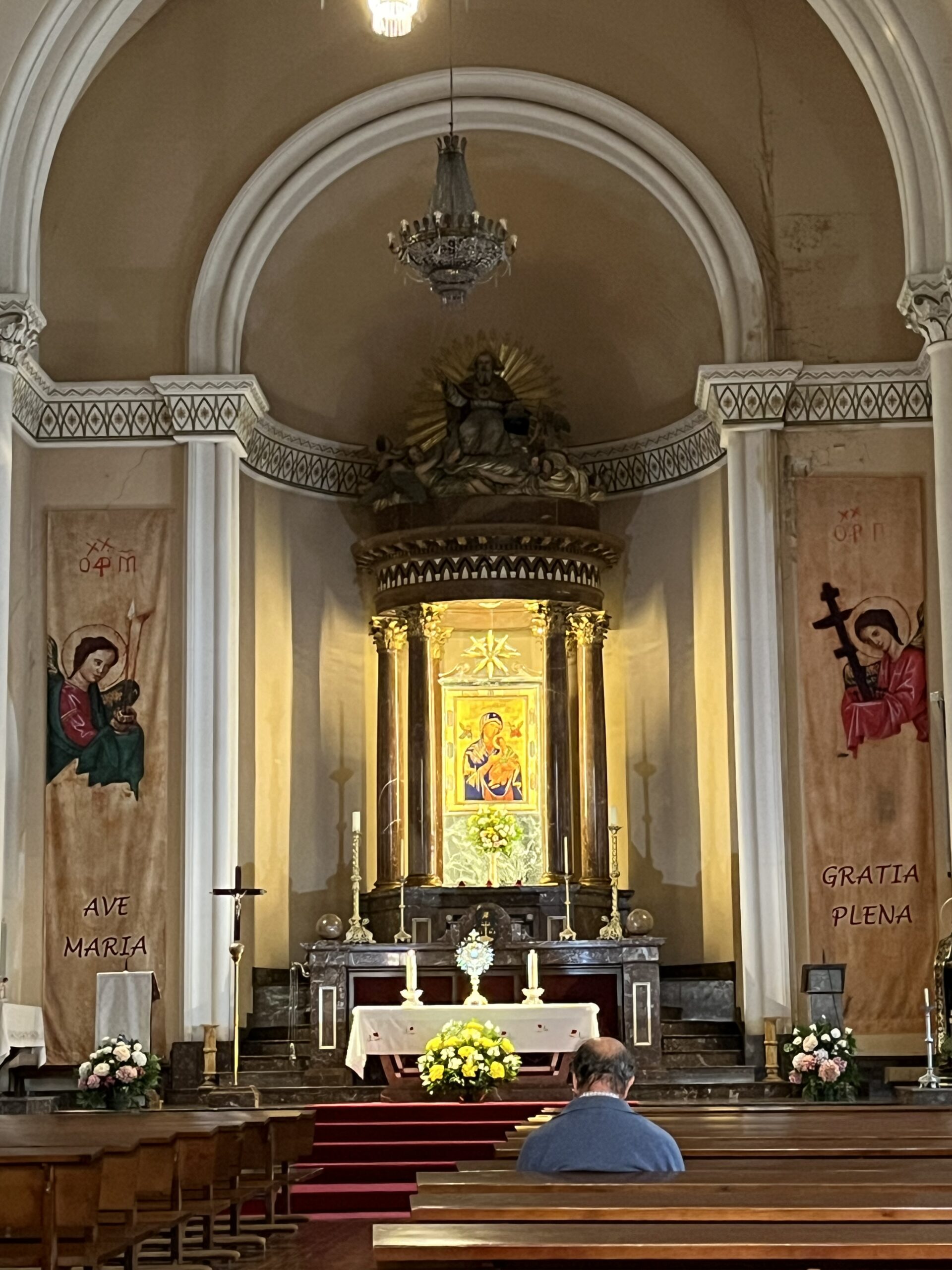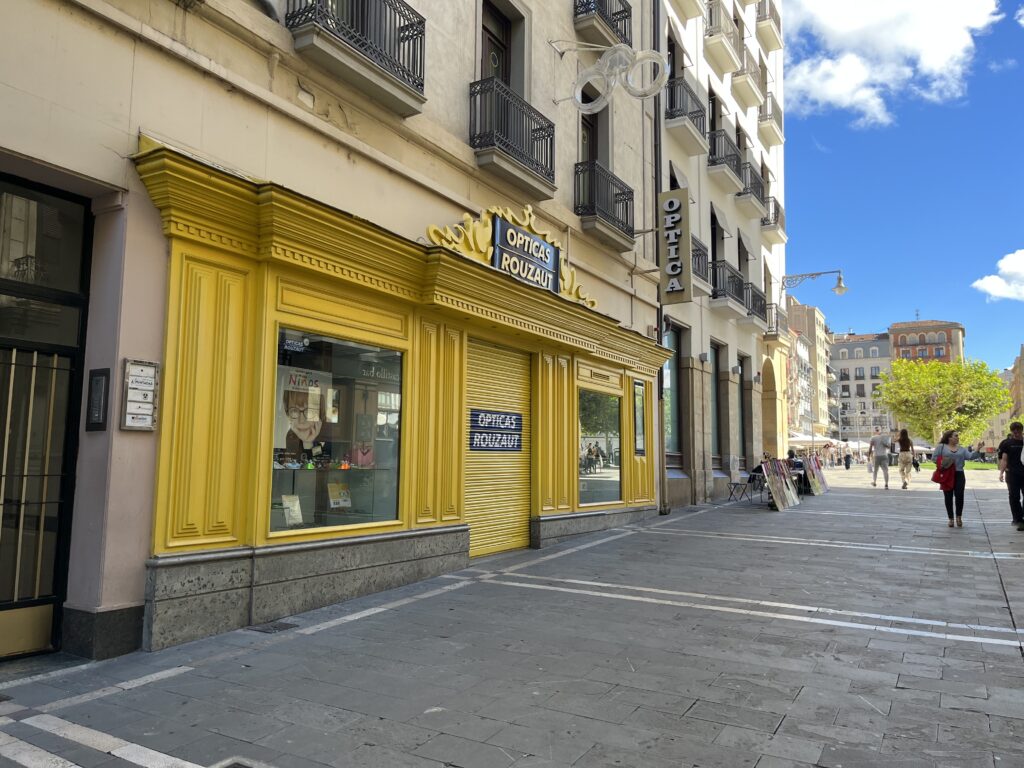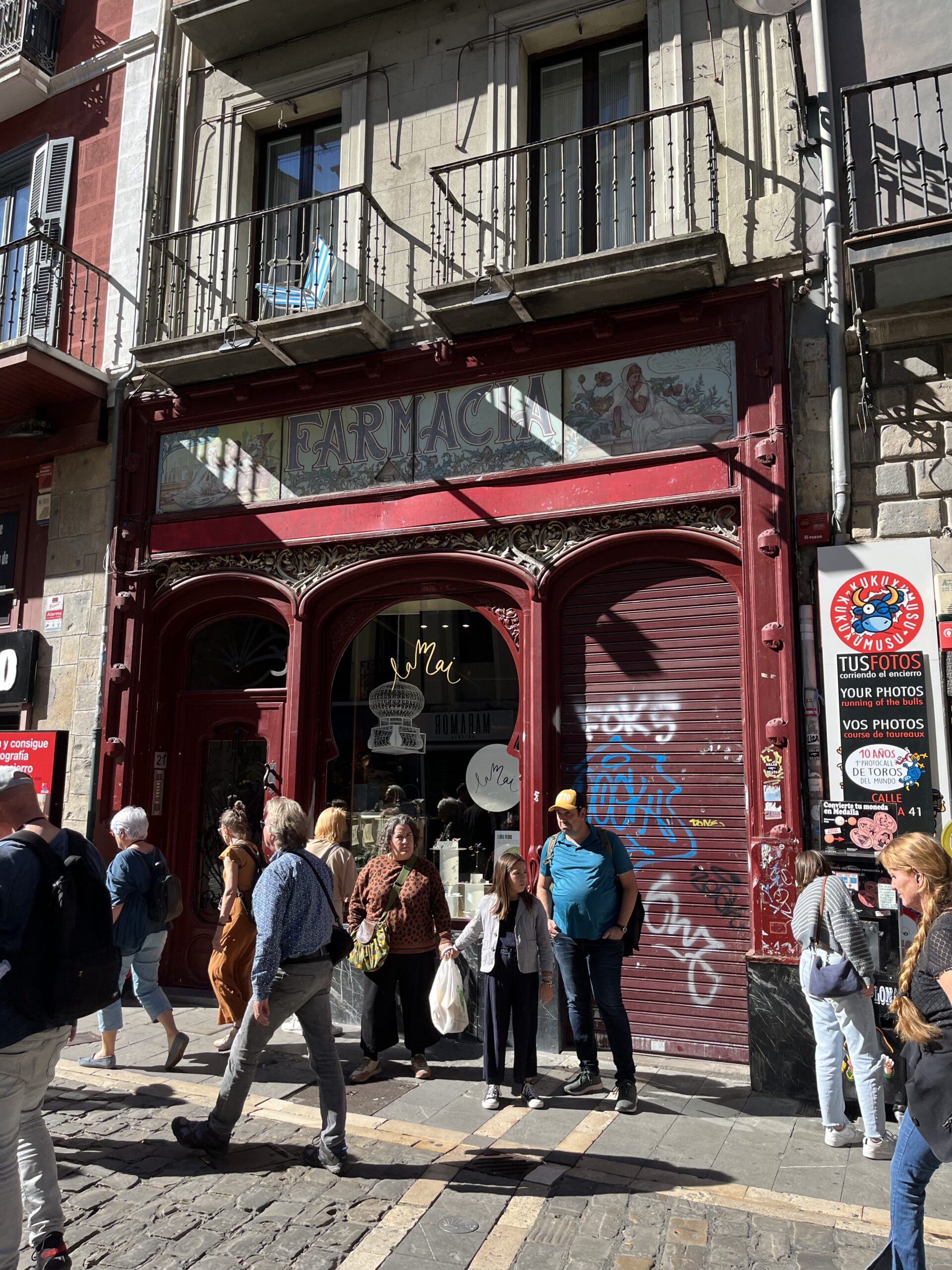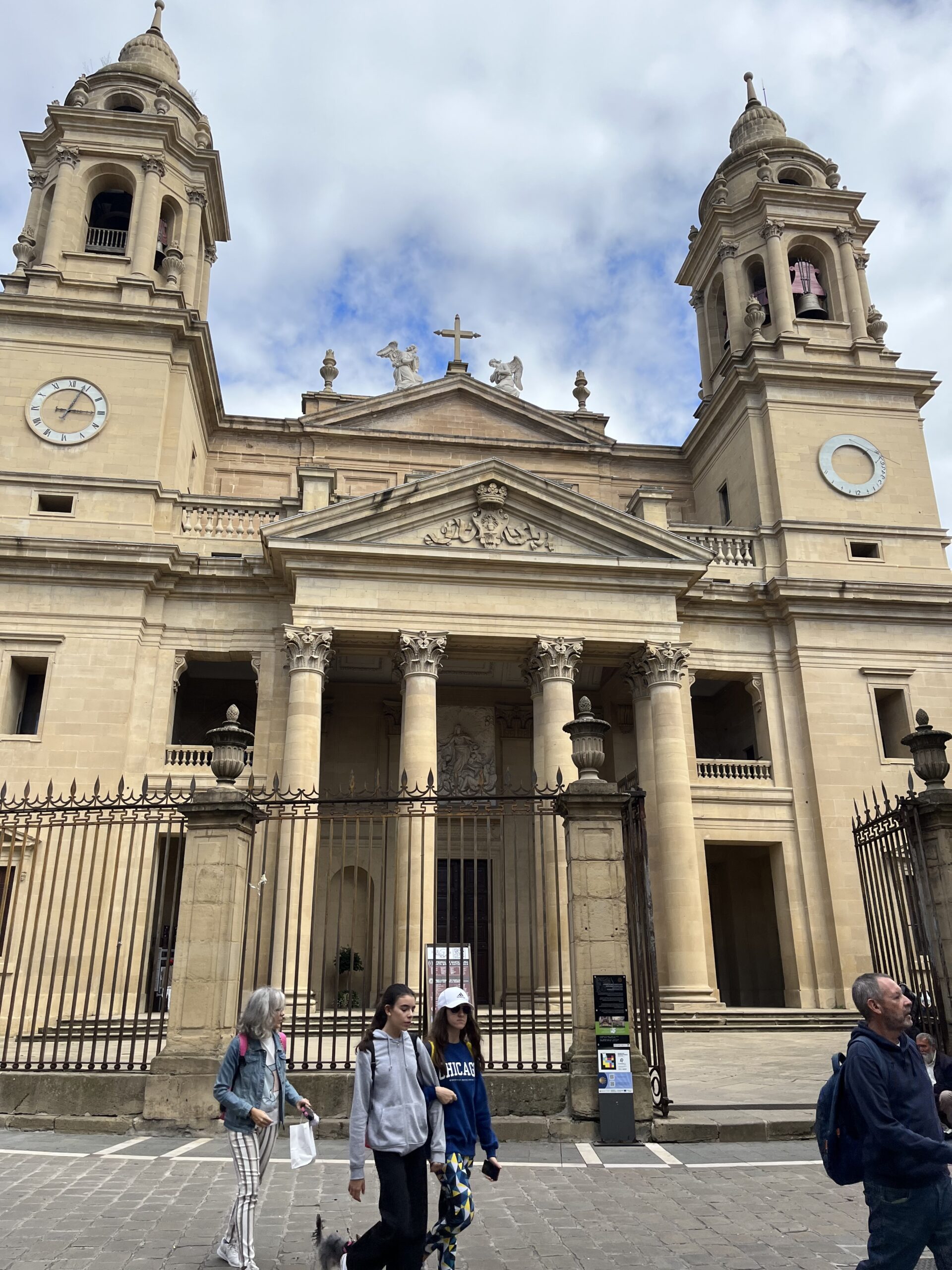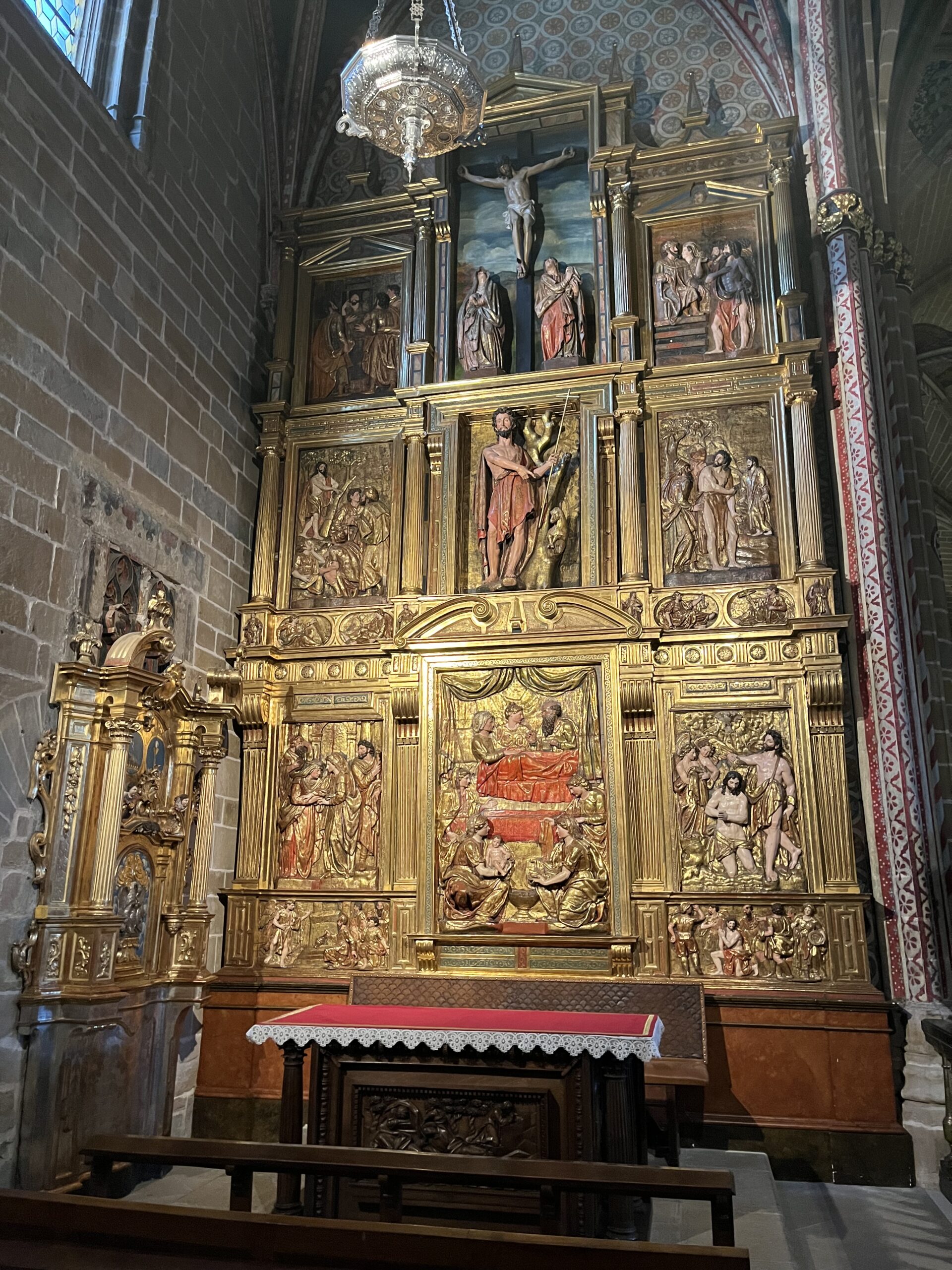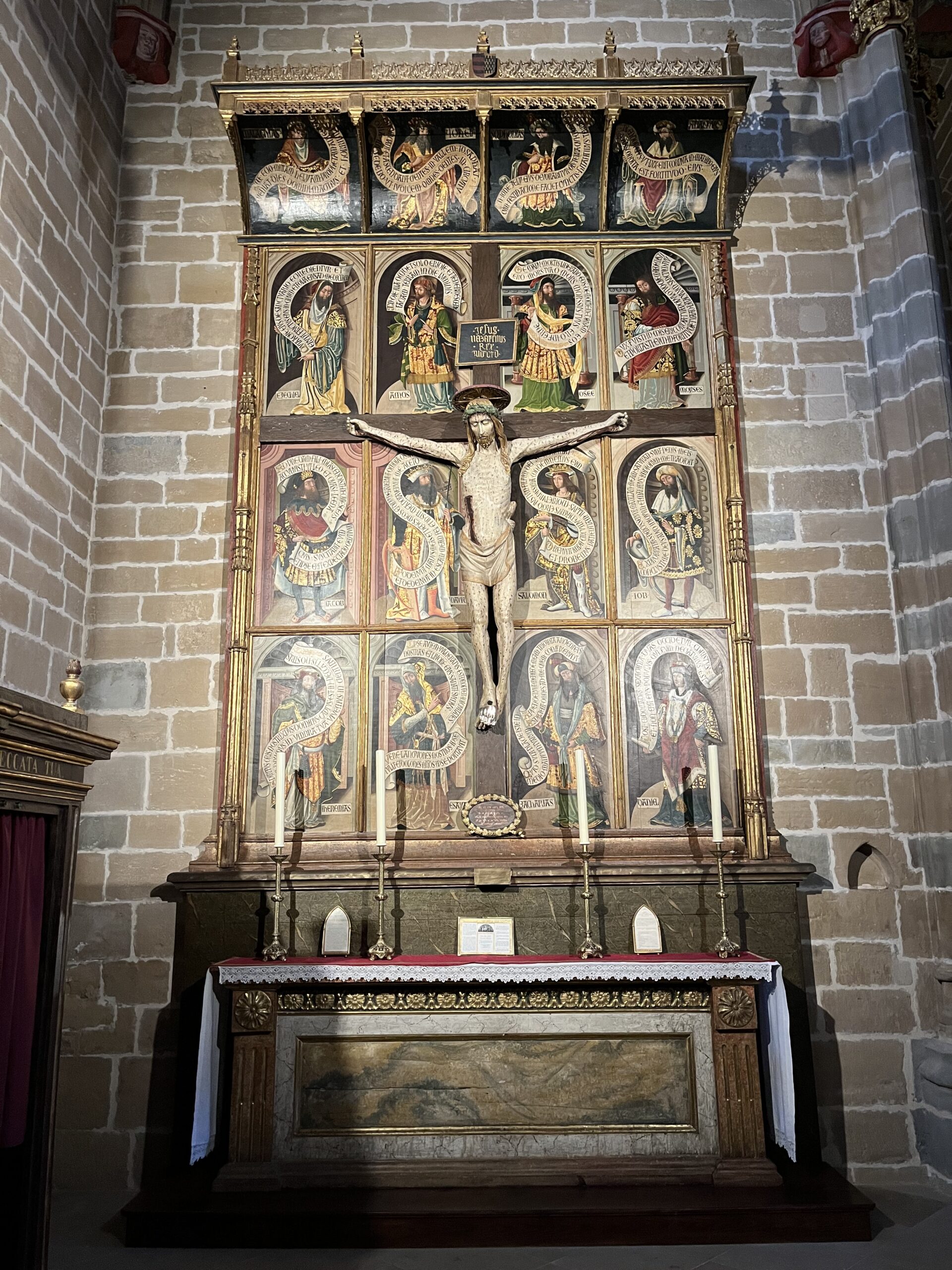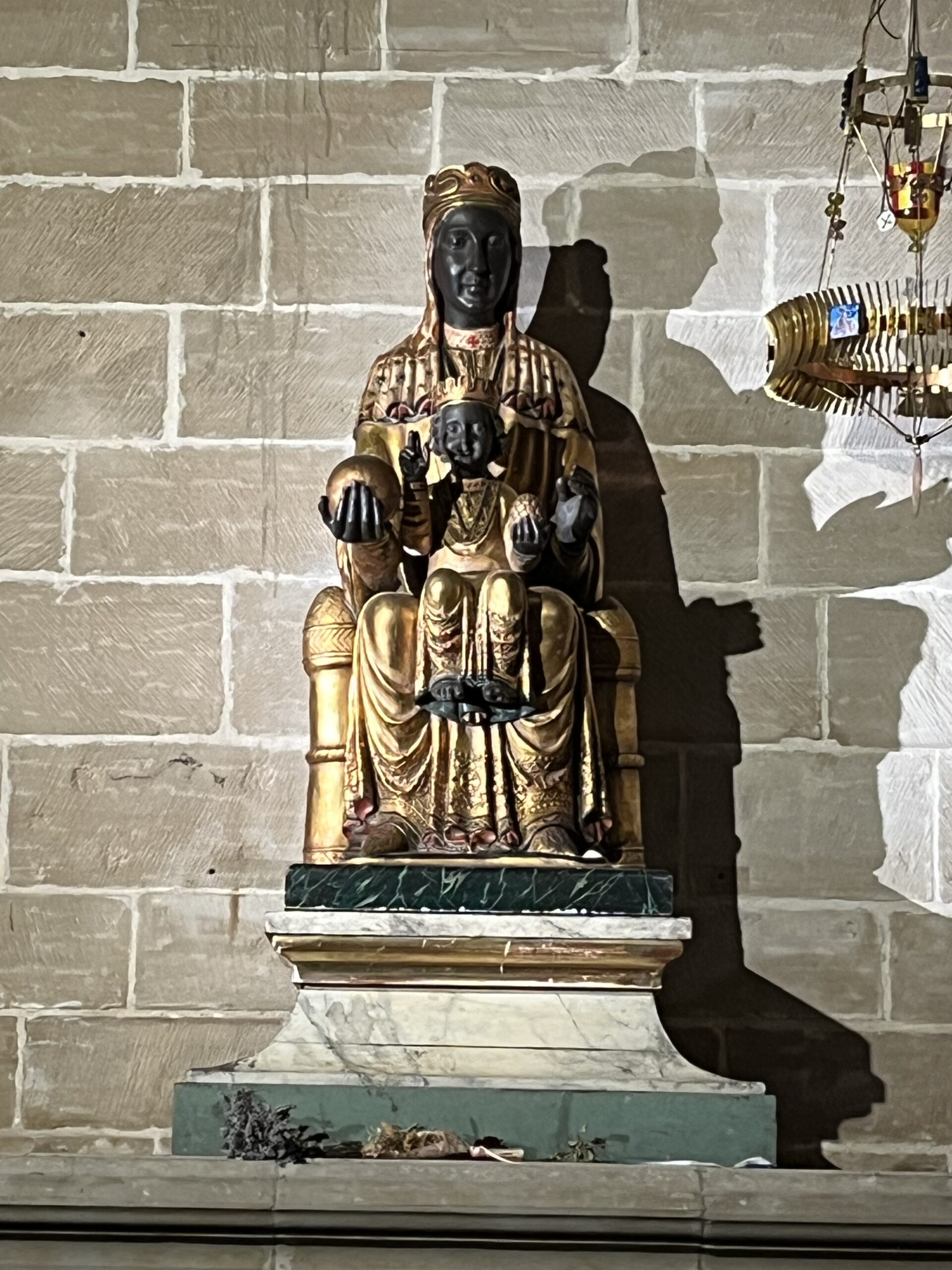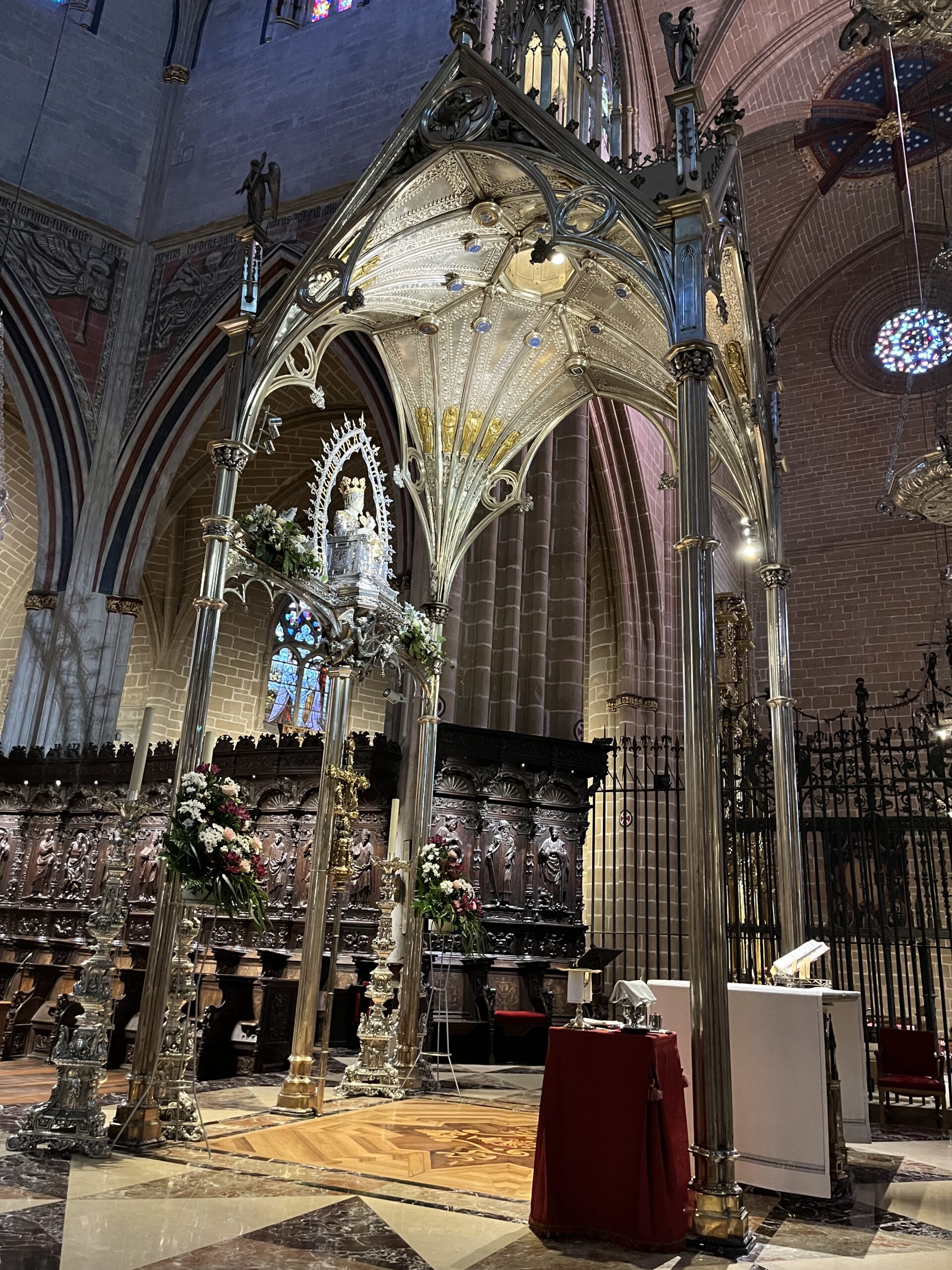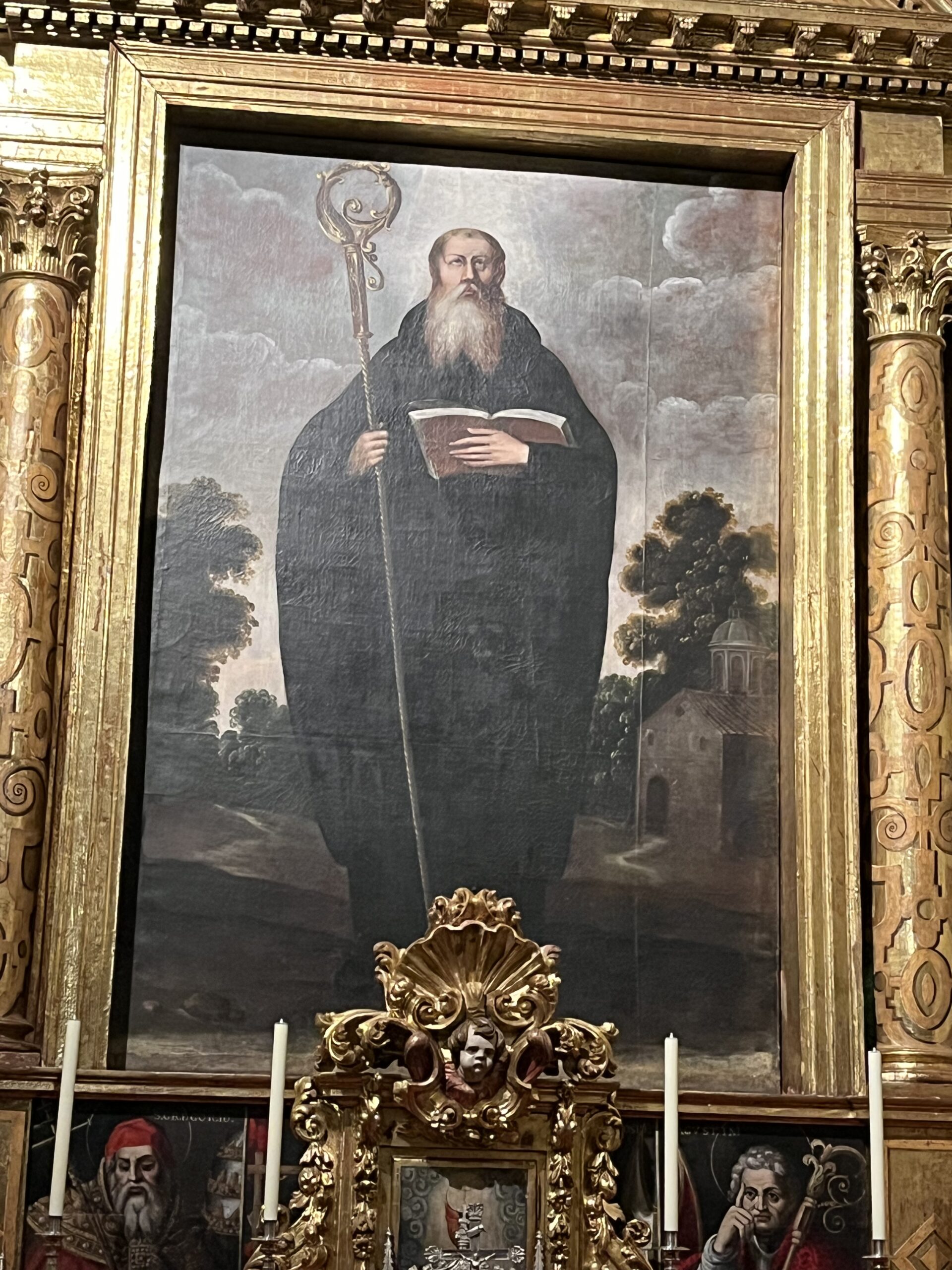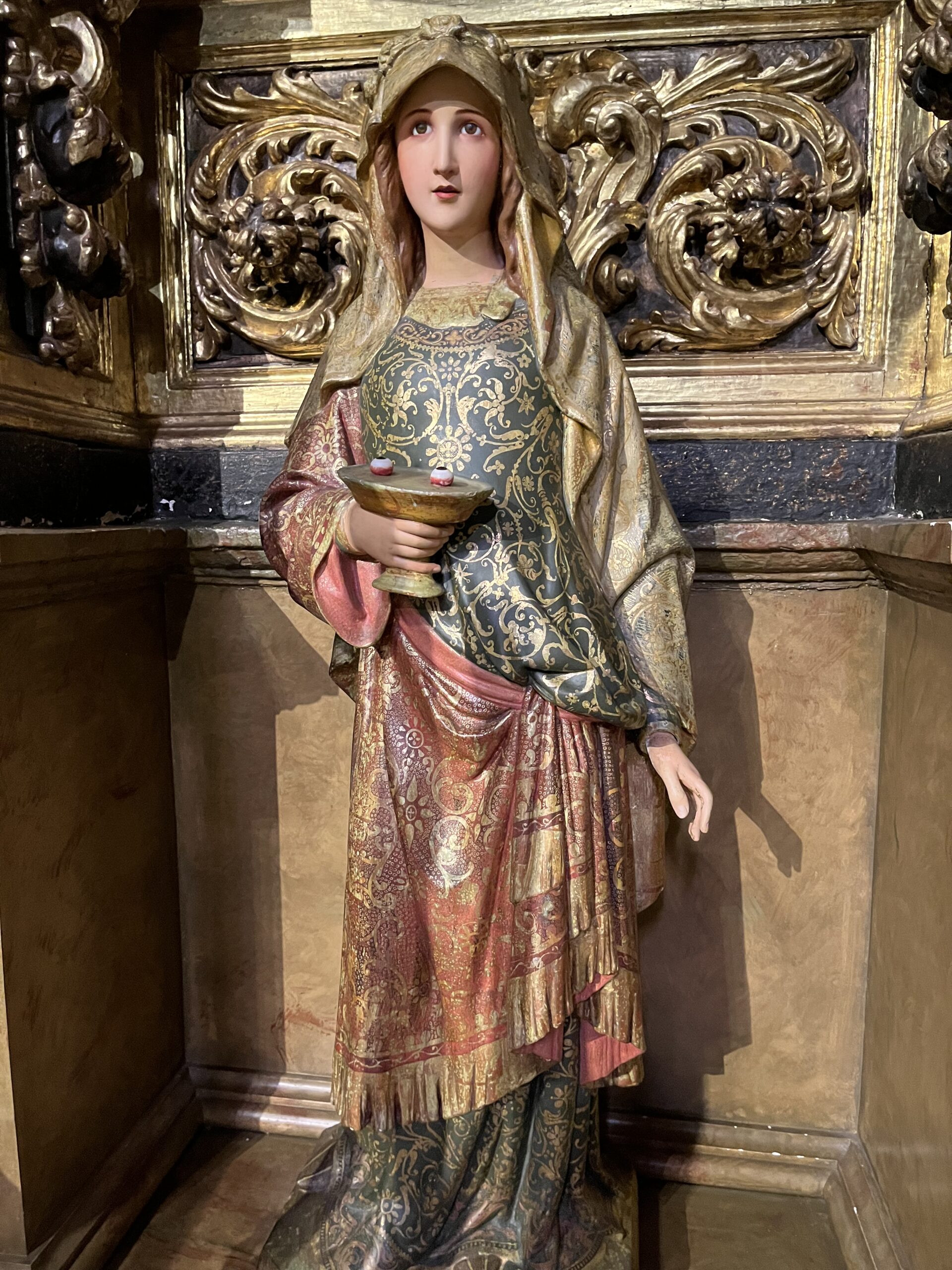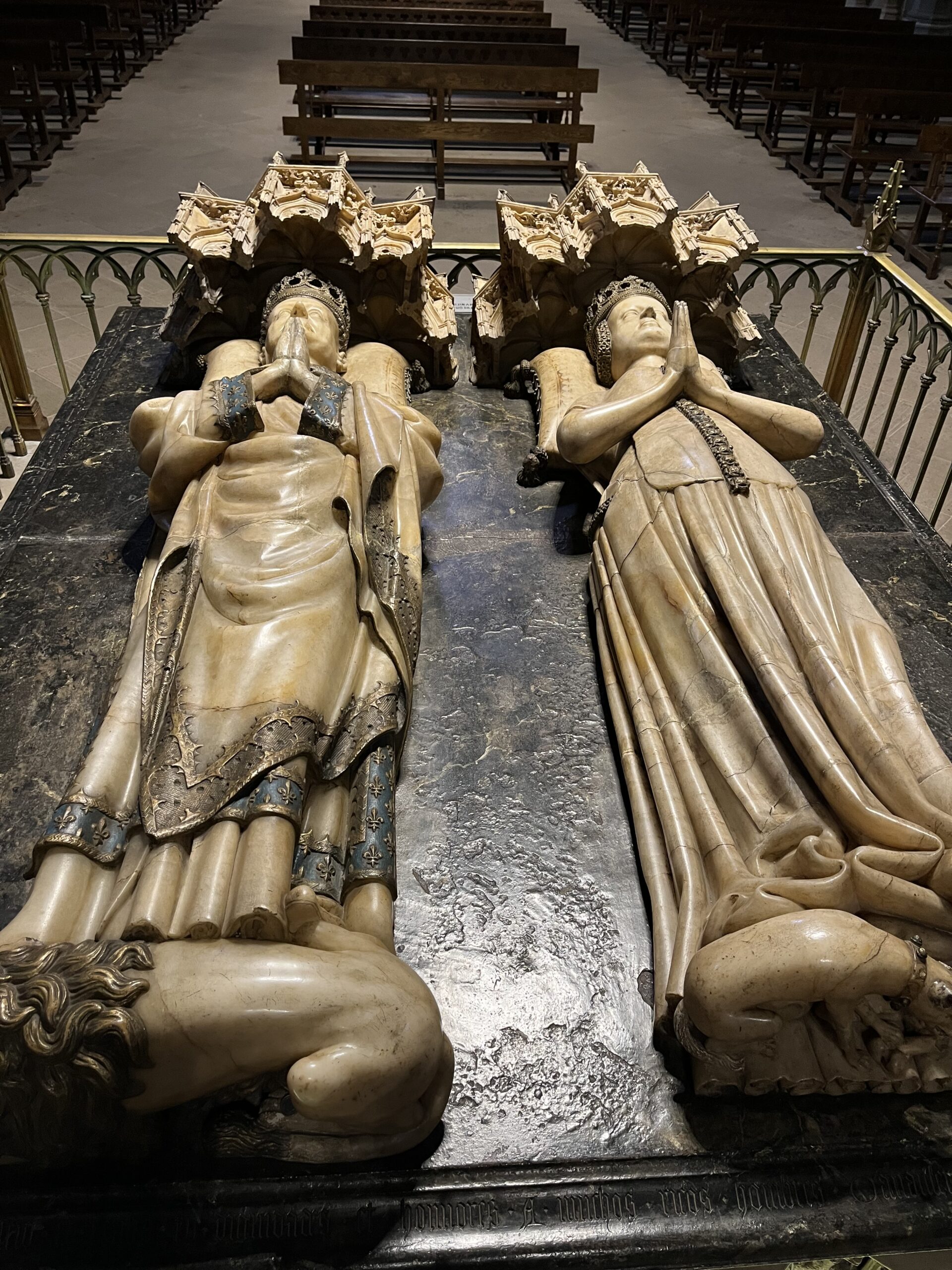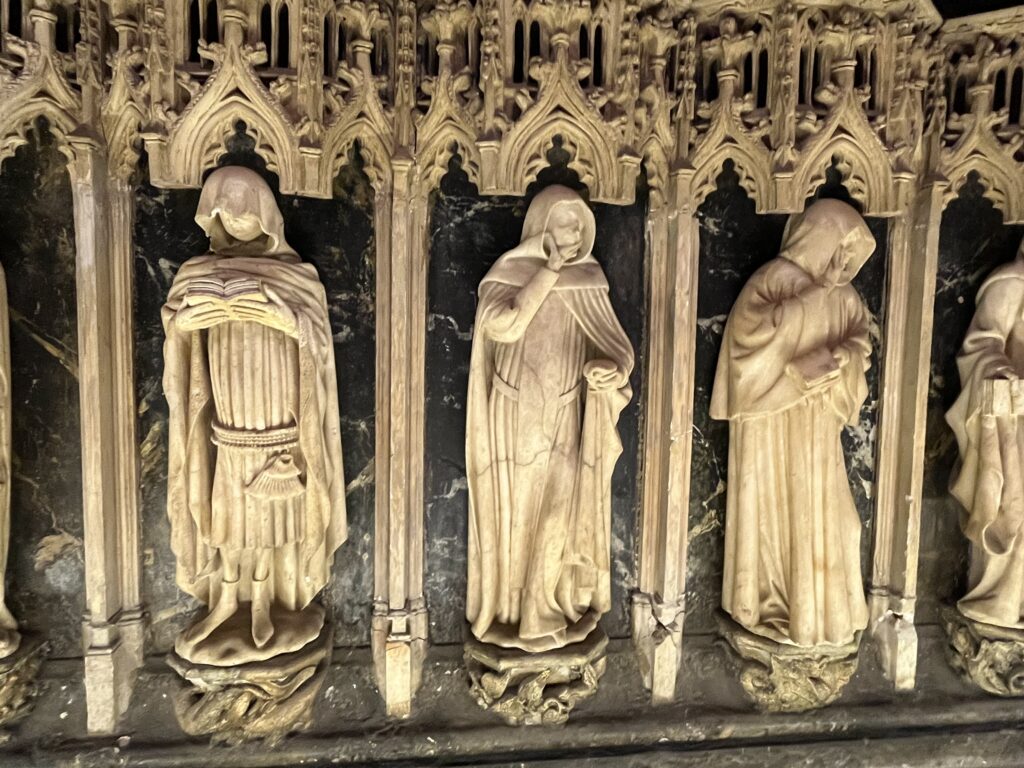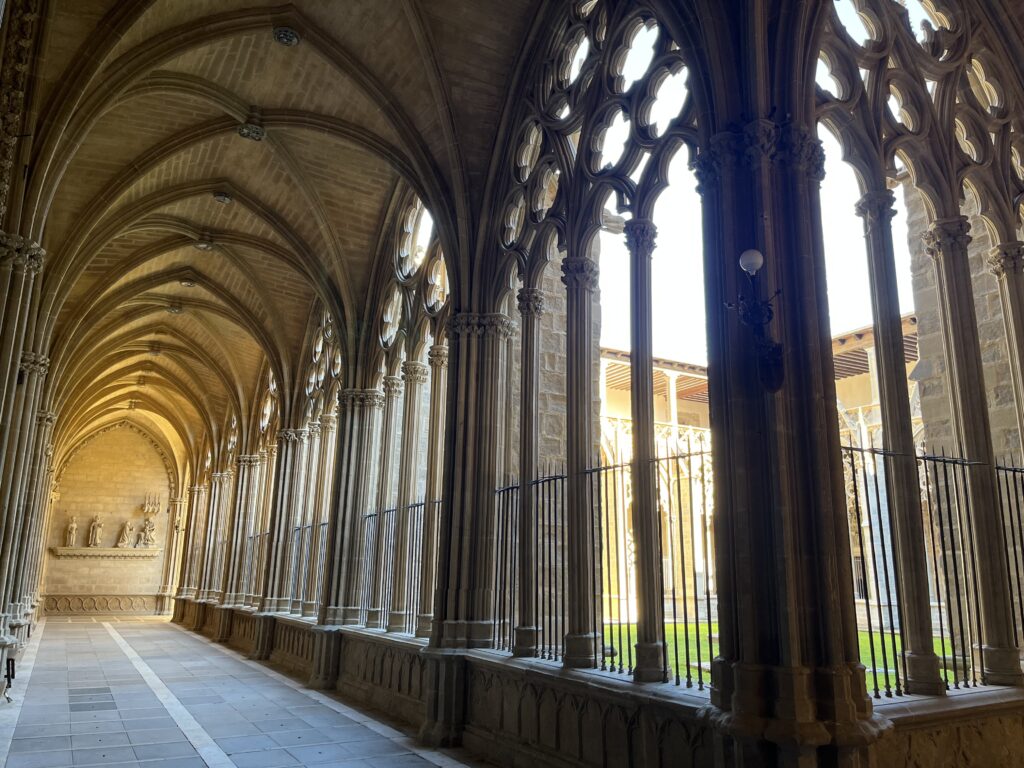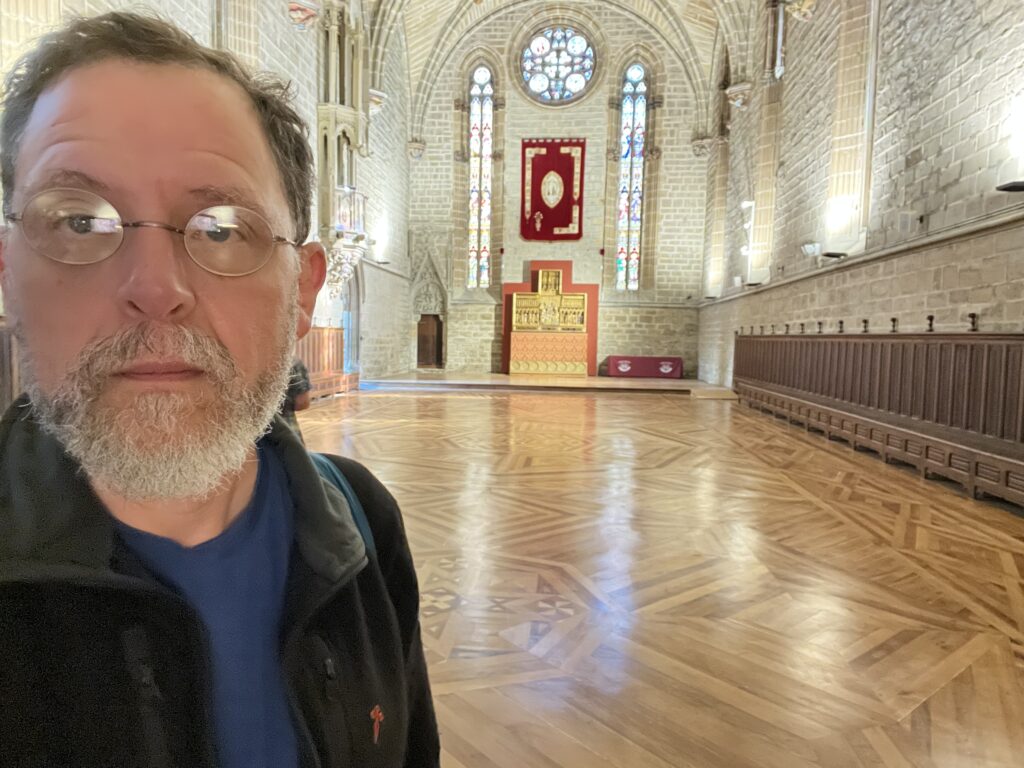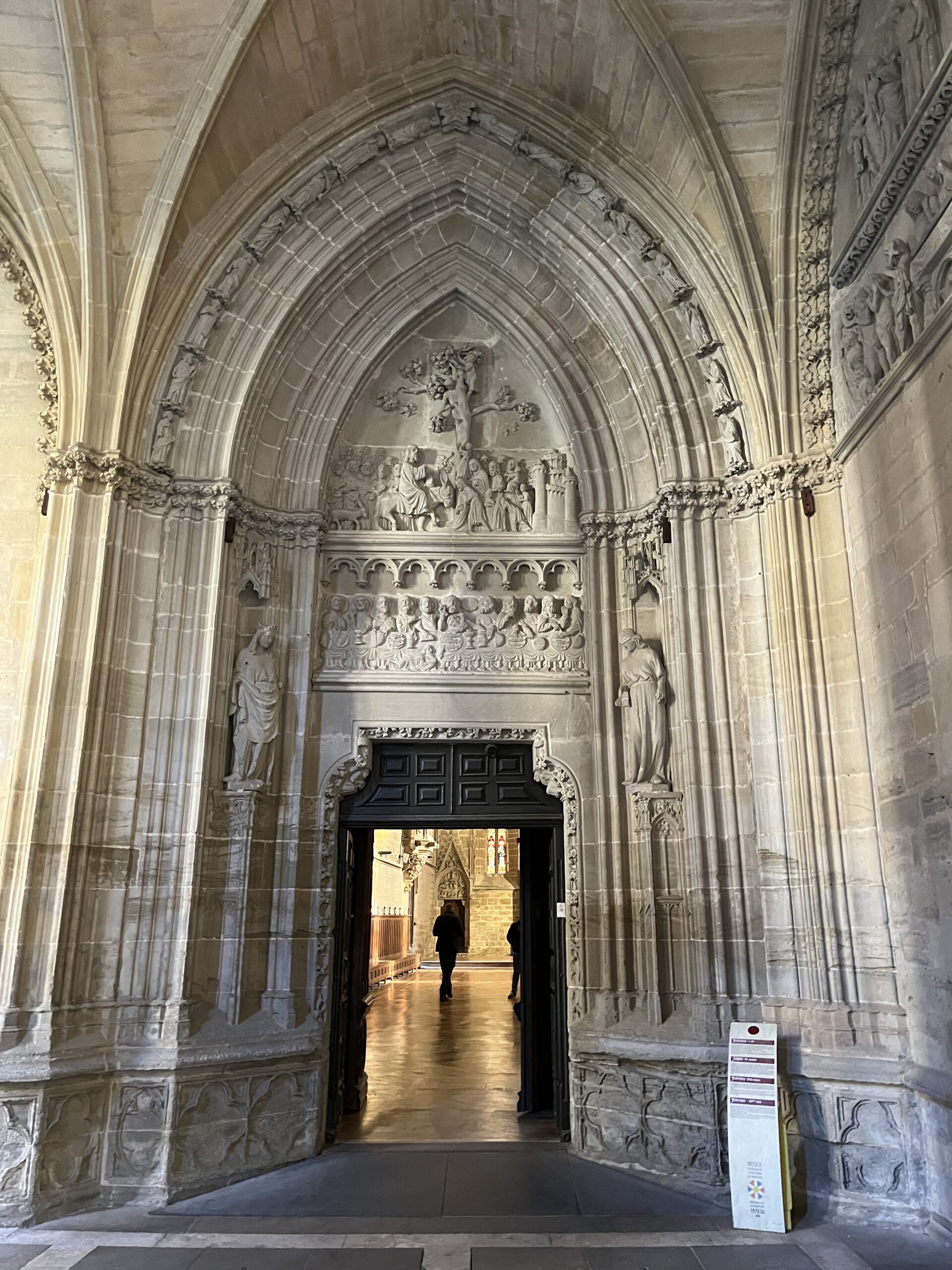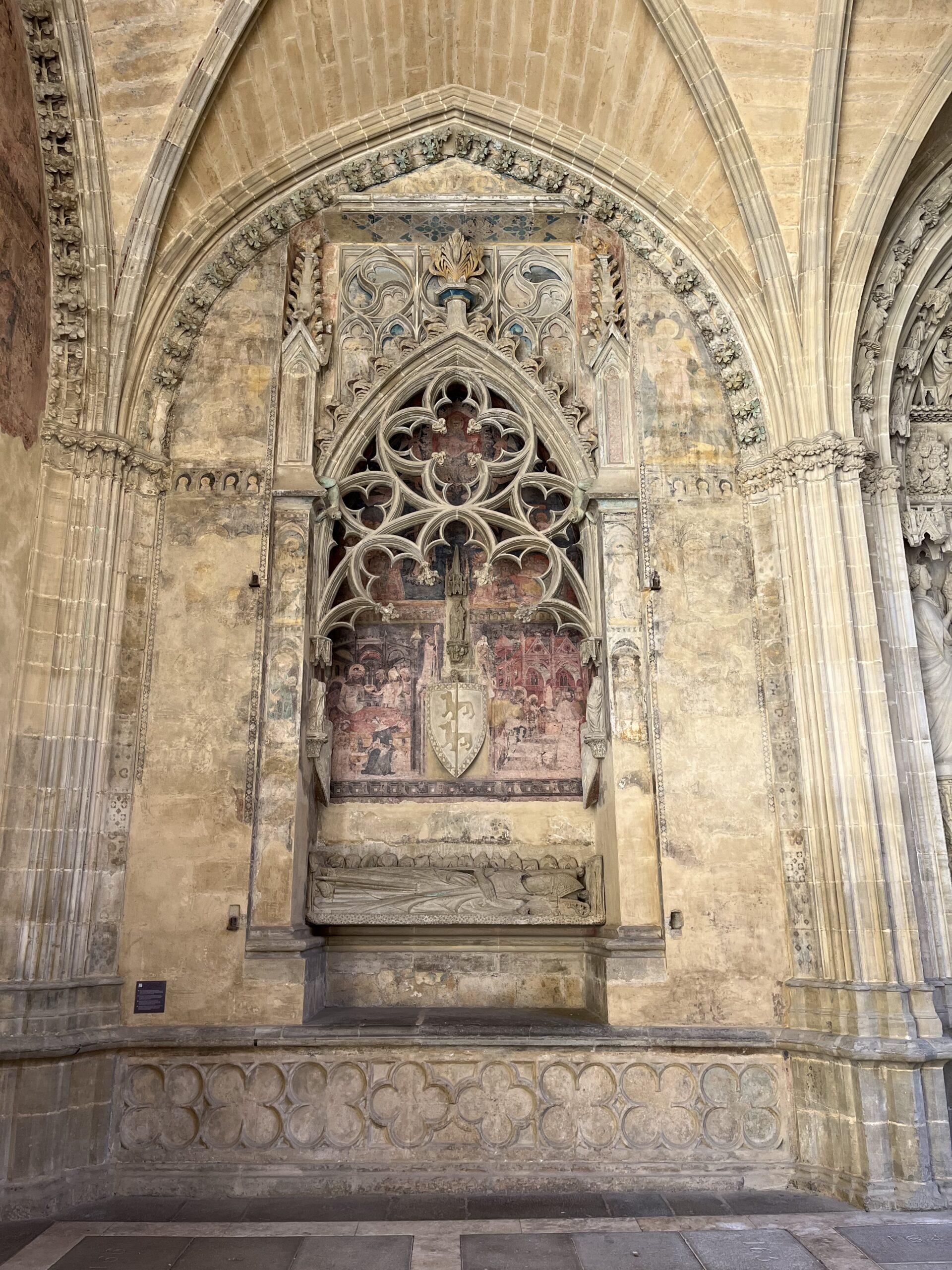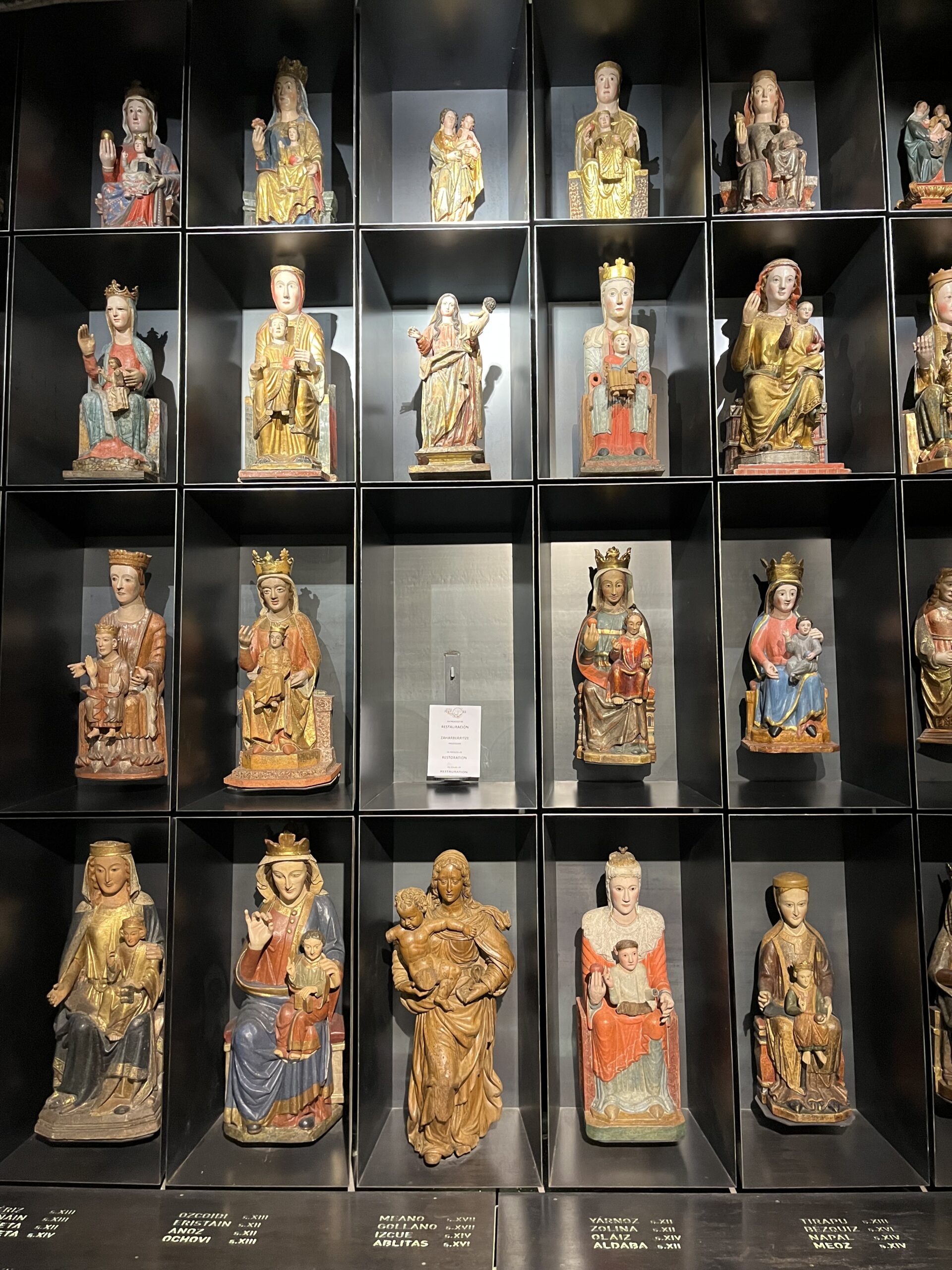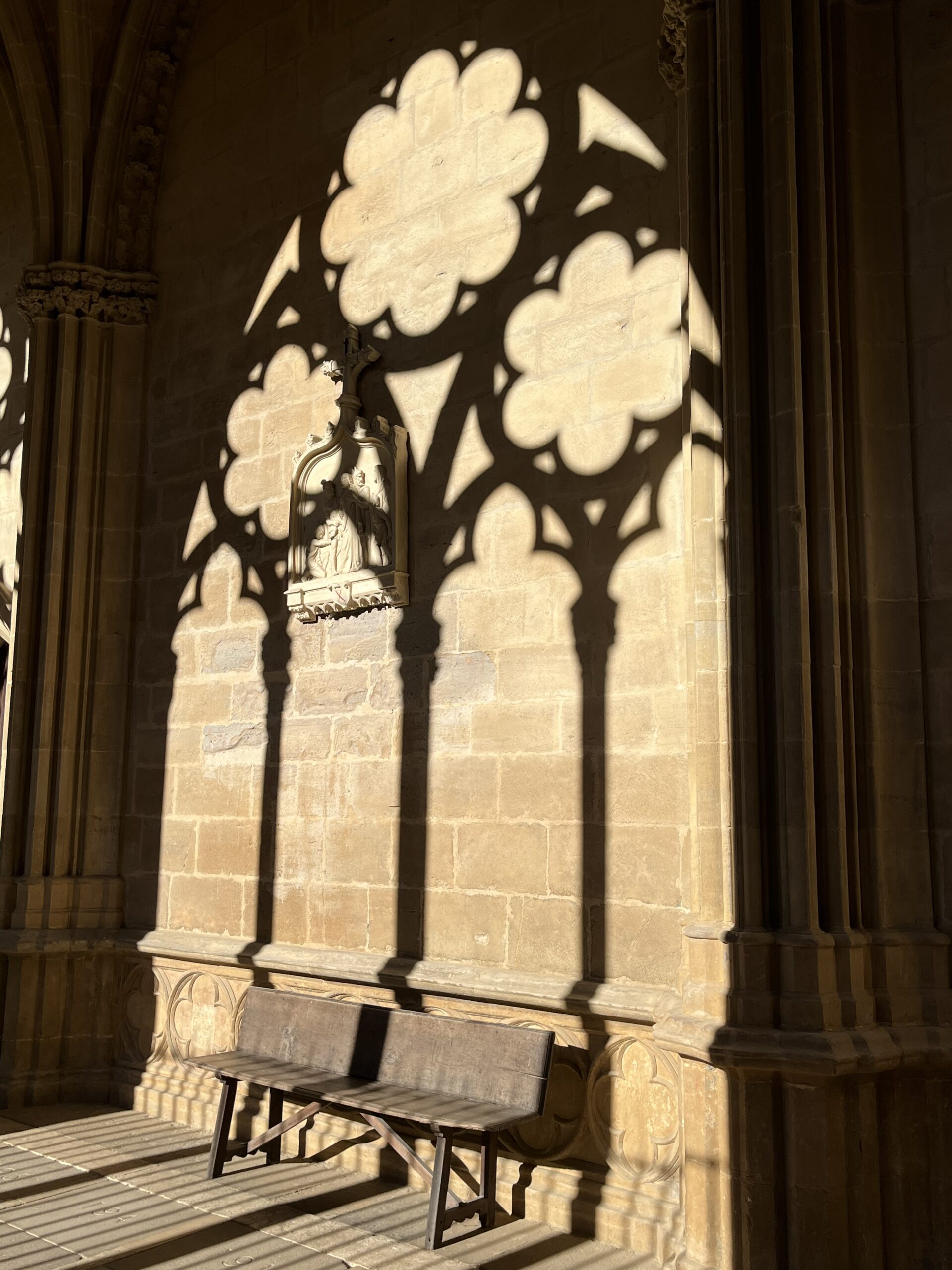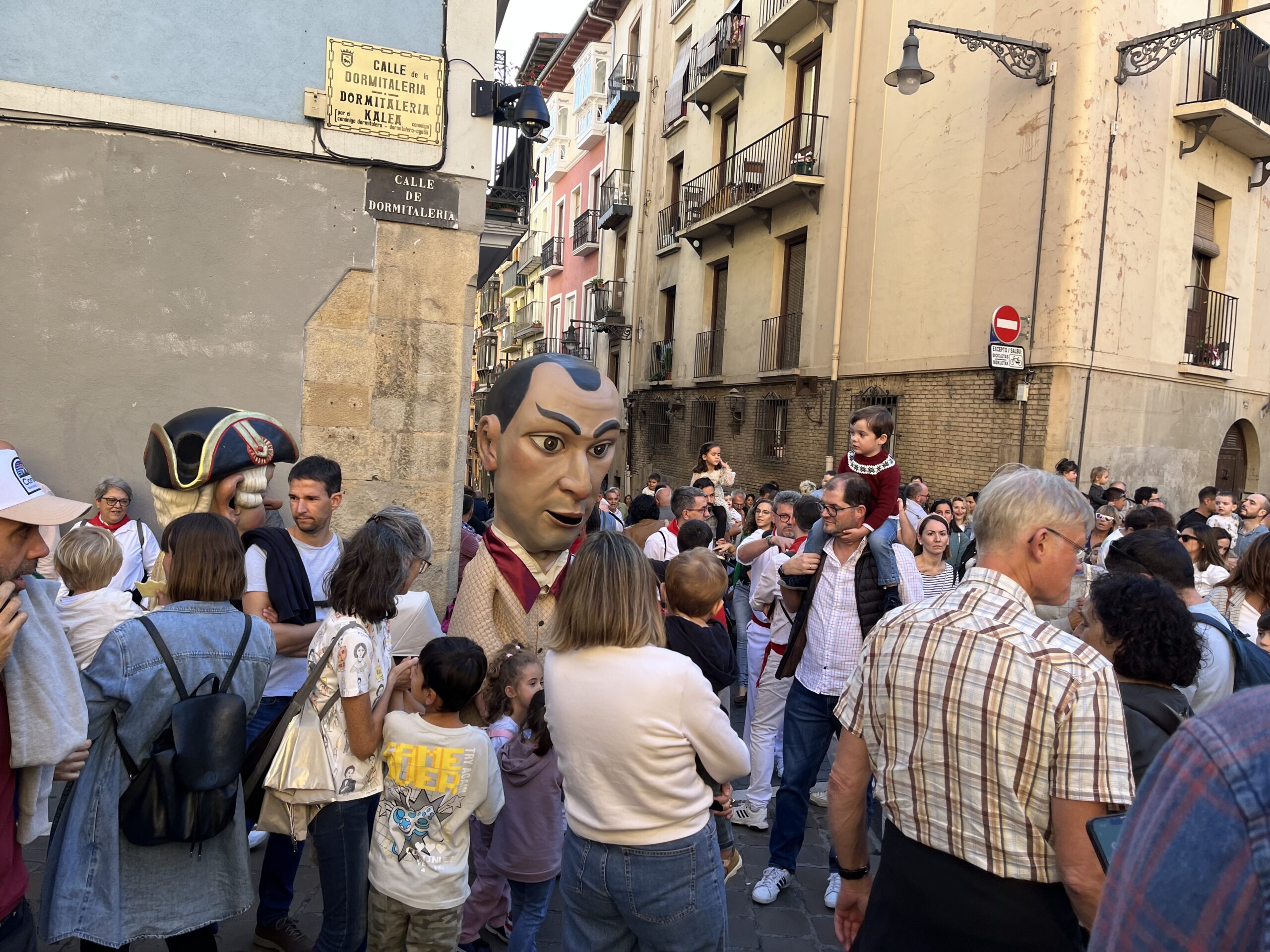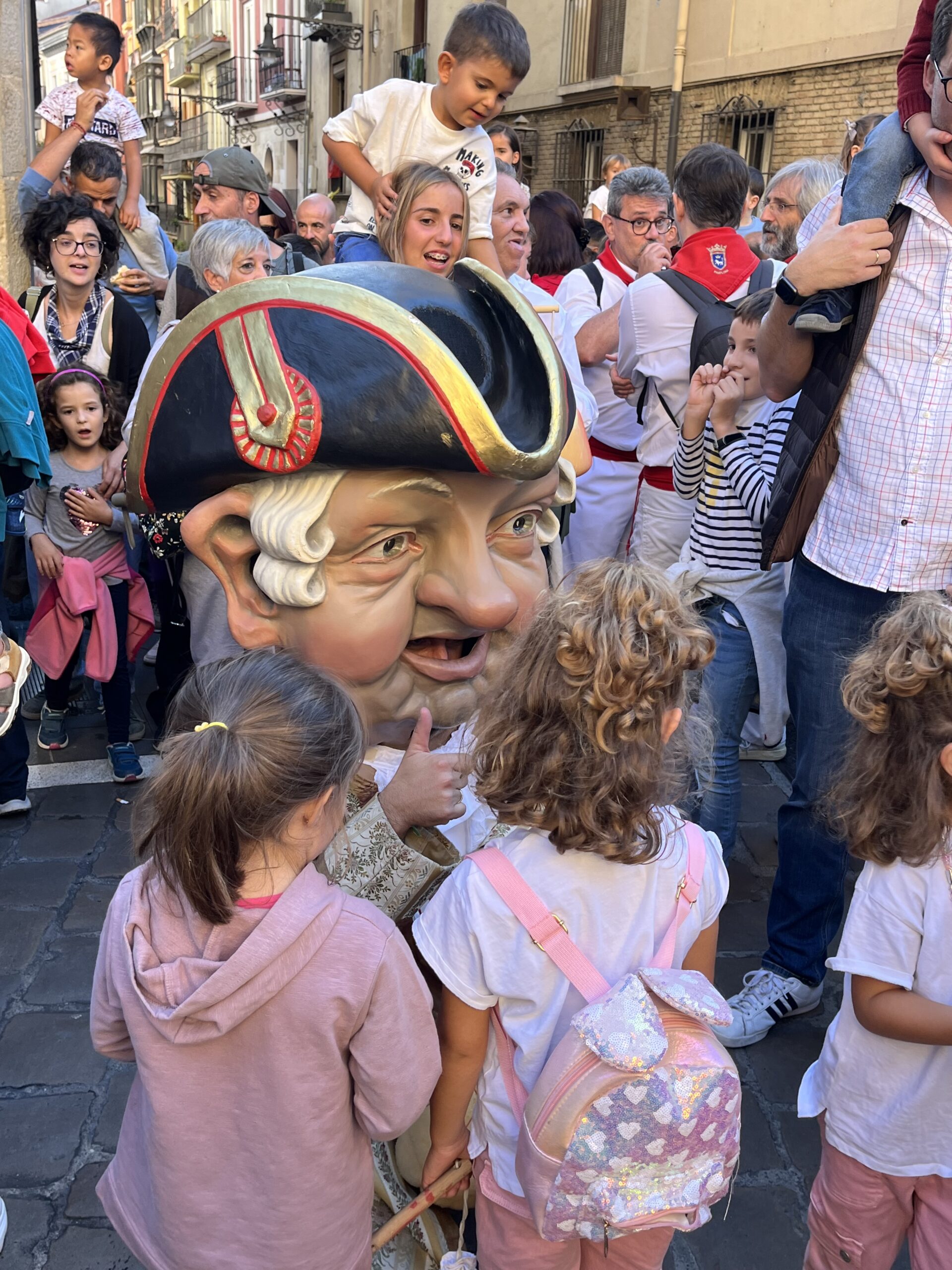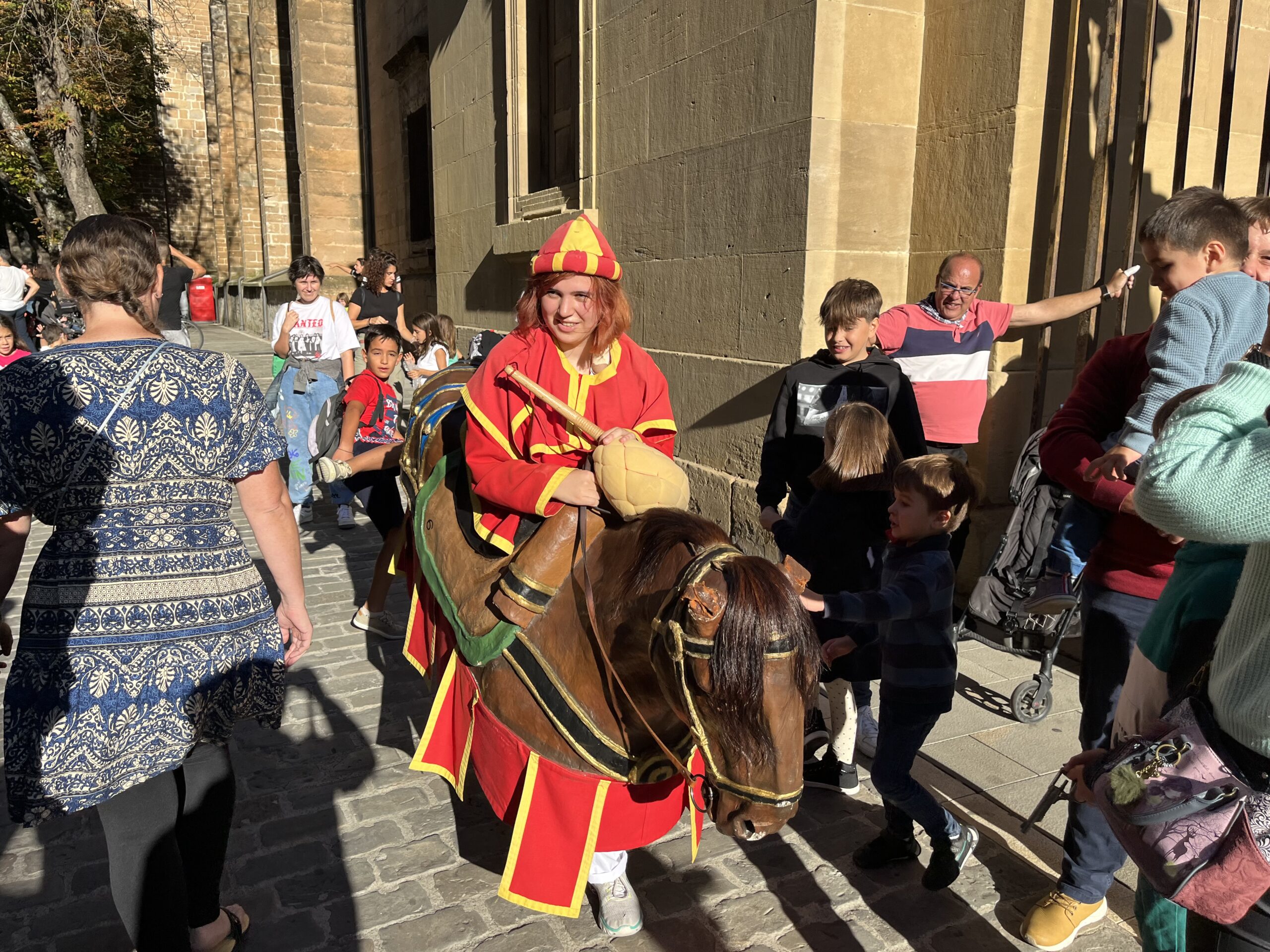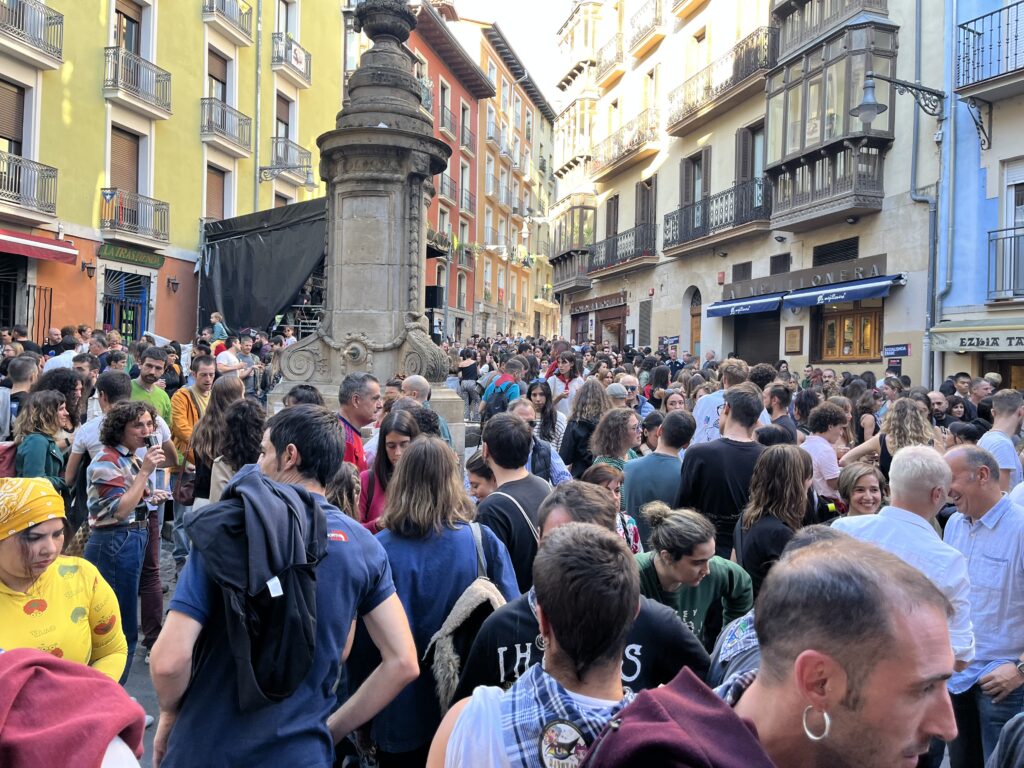Via Podiensis: Pamplona Fiesta!
By 7 AM I was up, packed, and meandering towards breakfast. Once again, the voices of doom were predicting no beds available in Pamplona, the largest city on the Camino in Spain and my intended destination for the day.
Sophie left early, but Tara and I left together about seven to walk in the dark and spooky forest. After about a kilometer, the Camino turned into a flat gravel road past a giant eyesore: a magnesite plant that dominates this section of the Way.
Probably not the scenery that a lot of folks were hoping for.
It was a roadwalking past the plant, and then on a narrow gravel path through high grass with an ominous warning sign to “stay on the path!”
Through it all, you could hear the constant grinding of machinery, and the occasional klaxons and chimes from the plant. Occasional other sounds, as well, including one which I’m sure must’ve been distant cattle but in my head sounded like a far off groaning in pain or fear.
And then I heard the cow bells. The pathway widened out considerably, and we could see from the top of the ridge the open pit mine is below in the mist.
Eventually, we reached the end of the designated industrial area, and it was back to the forest, this time on a quasi-stone path.
After a short walk, we arrived at the village of Ilarratz at about 7:45 looking for breakfast. We were sadly disappointed, as this tiny place had no amenities whatsoever.
About ten minutes later, we arrived in another, similarly tiny, village named Esquirotz.
After that, the walk was mostly in the woods, over a constantly shifting surface of dirt, semi-paved stone, and loose rock and gravel.
We took a slight detour to the village of Larrasoaña for breakfast. Proprietor of the shop was a former pilgrim who had returned to give back something to the Way. He said to us, “the first gift of the Camino is pain. Because you are living in the moment.”
After breakfast of coffee, orange juice, a croissant, and some mini muffins, we left there about 9 AM.
And just 10 minutes later, we were in the next village of Akerreta. The villages were coming sick and fast, now.
At one point, we were going downhill on one of these quite slick paved areas, and Philip, the Frenchman from Vendée that I had met much earlier on the Via Podiensis, in France, slipped and fell pretty hard on his backside. We tried to help, but he waved us off saying that he was OK. He did seem a little shaken.
We passed through the village of Zuriáin at 9:50 AM, which led to just a little bit of highway and near highway walking. Fortunately, it wasn’t for too long. Unfortunately, after that the Camino returned to the mud.
We passed through the village of Irotz at about 10:22 AM. I should mention that every village church we saw was locked.
At this point, the Camino forks, with one fork heading directly to Pamplona, while the other fork takes a detour to the hilltop village of Zabaldika and its amazing little 13th century church of San Ésteban.
Obviously I took the latter route, which culminates in a steep climb up a narrow, rocky dirt path. Here at the top of the hill, we visited the church.
In the sanctuary, the 16th century retablo features a plethora of statues, but from the top to bottom the main register contains the Crucifixion at the top, then the Assumption of the Blessed Virgin Mary, and Saint Steven, Deacon and Martyr.
I prayed for the intention to the Camino here, but also for my own discernment.
The sister let us climb the bell tower to ring what is reportedly one of the oldest surviving bells in Spain, having been cast in 1377.
We left about 11:10 AM and were mostly on gravel after that, sometimes quite steeply downhill or up. At one point, we went underneath a pretty major freeway. Mostly through trees, though at some points we could see new suburban housing in the distance.
For a while, we ran long a path on a bluff over the freeway. It looks like the chasm had been blasted out for the freeway to run through, and we were walking on what used to be part of the hillside.
At noon precisely, we came down to the river and crossed the bridge into the former village, now suburb, of Trinidad de Arre. The village was founded in 1184, as nearby signs will tell you. The great Basilica there is truly a unique church, unfortunately it was locked up for restoration.Of the three times I’ve passed, it’s only been open once.
And then it was through the urban landscape leading into Pamplona, through several suburbs that began as villages.
At about 1 PM, we arrived at the dominating walls in the city of Pamplona. It’s hard to get a sense of the scale of these things, even when you’re standing under them. The tops look like little Lego toys, but those bastions are large enough for multiple people to be standing in.
We arrived in the city to find it in full scale party mode – the annual wine harvest festival is this weekend. The streets are full of revelers. People are eating, drinking, and dancing in the streets. It’s contagious fun!
We made our way to the massive Jesus y María Albergue and were immediately able to secure beds, doomsayers notwithstanding. After doing the usual pilgrim chores, my first stop was a gear shop to pick up a pair of replacement gloves.
Then I had another mission. The crowds though, were just nuts, and made it difficult to get anywhere quickly. In places it was wall-to-wall people. Whole streets were packed from one side to the other, sometimes for blocks.
And then you would sometimes have parades with banners and bands push their way through.
My goal was the Plaza del Castillo, and specifically the Café Iruña. I finally arrived to discover that every single café and bar was packed and all the outside seating full. Café Iruña was no exception.
Unfortunately, what I hadn’t counted on, is that they apparently closed the basement bar for the fiesta. I’m not entirely sure what the logic there is, except that it is a pretty cramped space, and a crowd might be a problem in there.
I had hoped to meet up again with my old pal Hemingway, whose life-size statue sits on his customary barstool there. Alas, it was not to be.
I then found my way to the only open church I could find, Iglesia San Ignacio, to pray Vespers for the intentions of the Camino. Happily, this particular church has perpetual adoration. This particular church is next-door to a Basilica of the same name which sits on the site of hospital where Saint Ignatius recovered from his wounds.
Afterwards I just wandered the city a bit, watching the people and admiring the architecture.
Finally, I headed over to the beautiful, and massive, Cathédrale Santa María de la Asunción. I met up with Tara and we took the Cathedral tour.
The building itself is a Gothic masterpiece, though it has a neoclassical façade on the front for some reason. Most of the artwork is much later than the building itself – 16th and 17th centuries. But somehow, it all works. There is always something new and amazing around every corner. I probably took a hundred photos.
We would come back for the Rosary and Vigil Mass later in the evening.
Meanwhile, we expect the fiesta to continue until well into the morning.
Date: 23 September 2023
Place: Pamplona
Today started: Zubiri
Today’s Photos!
